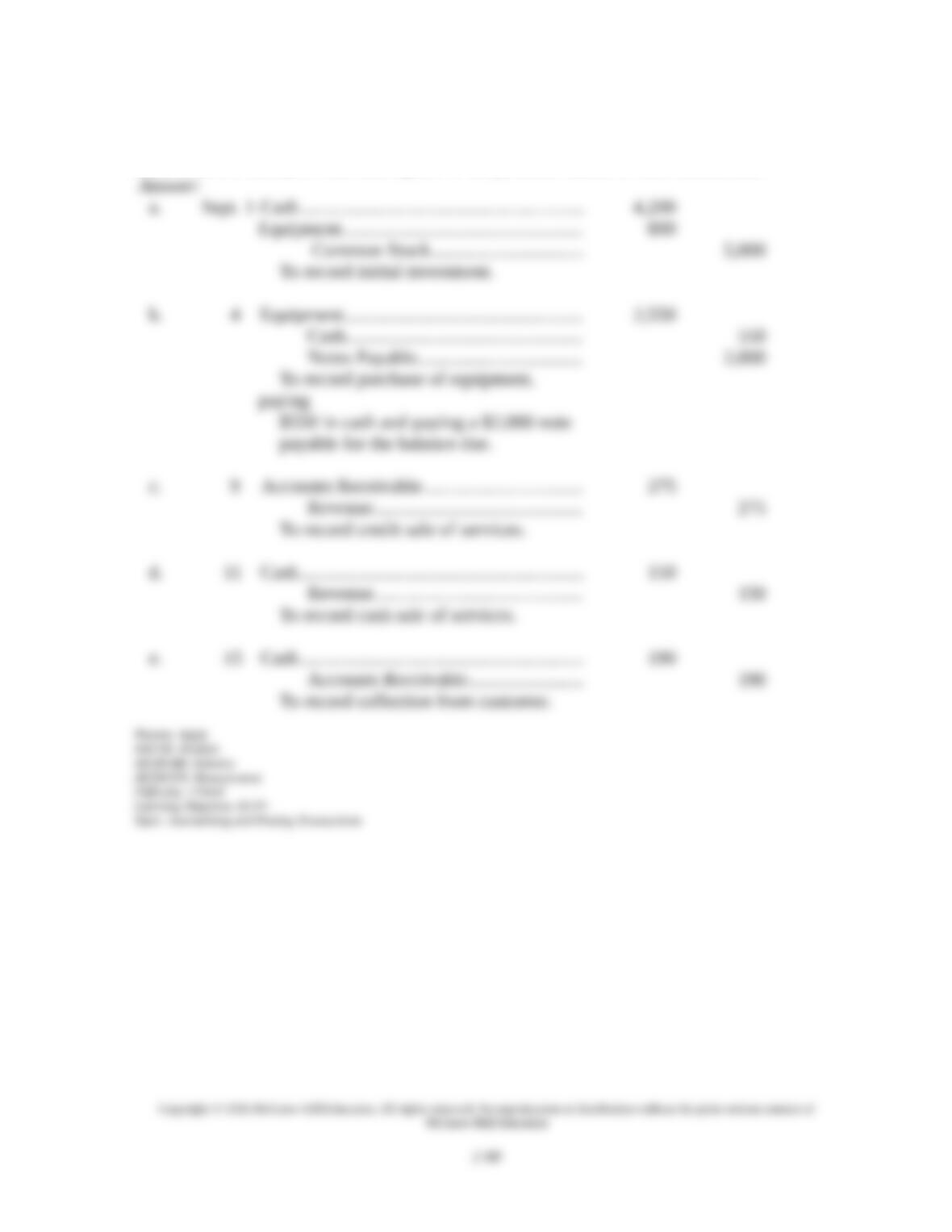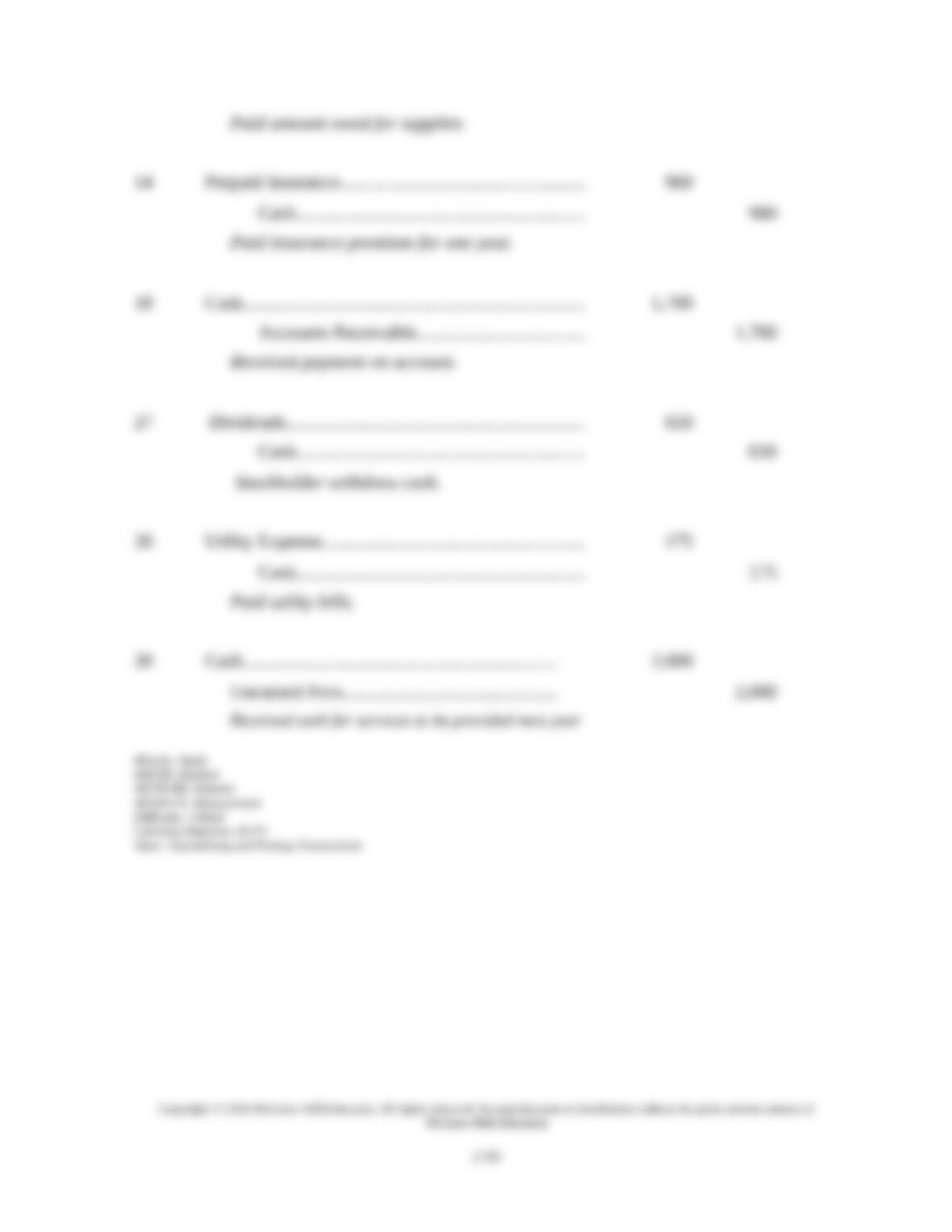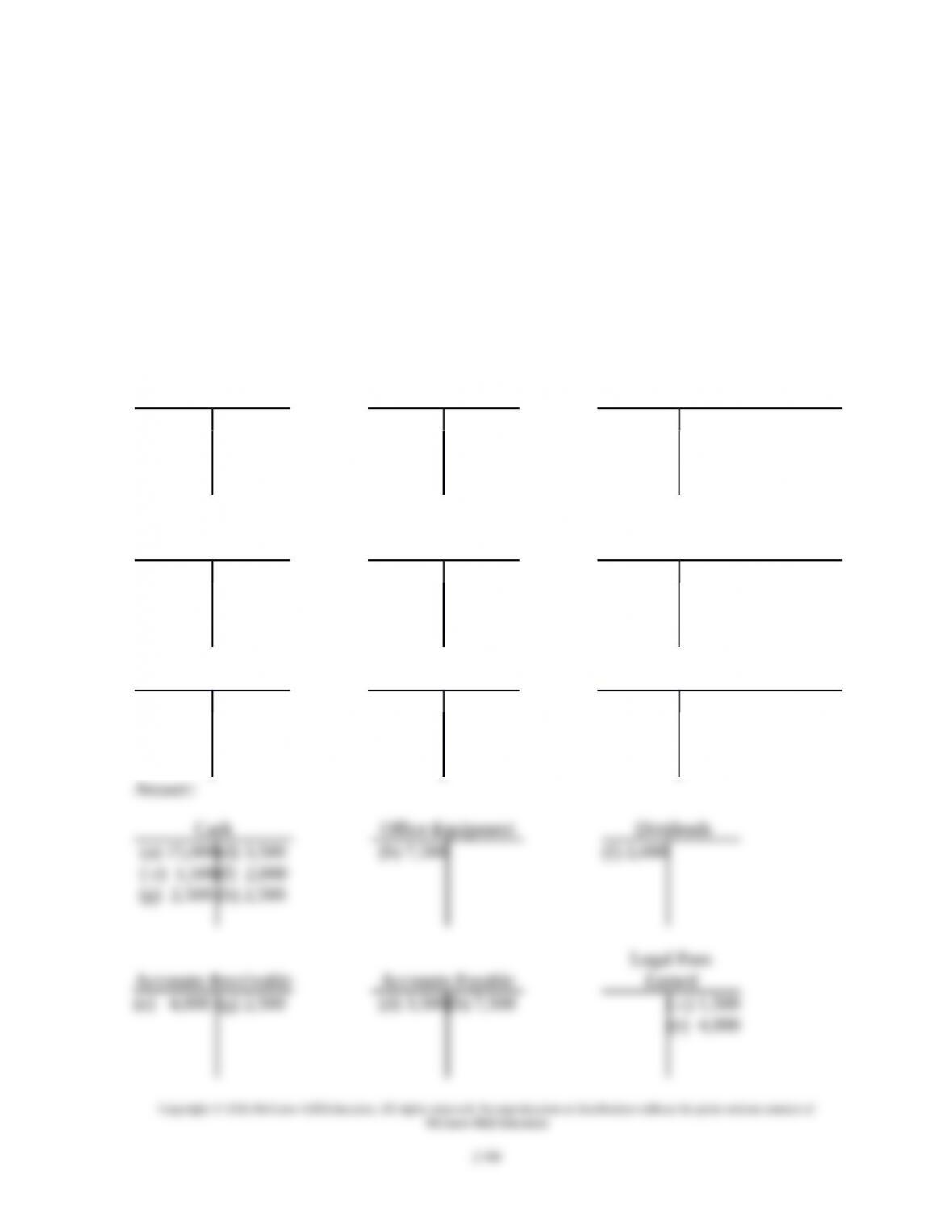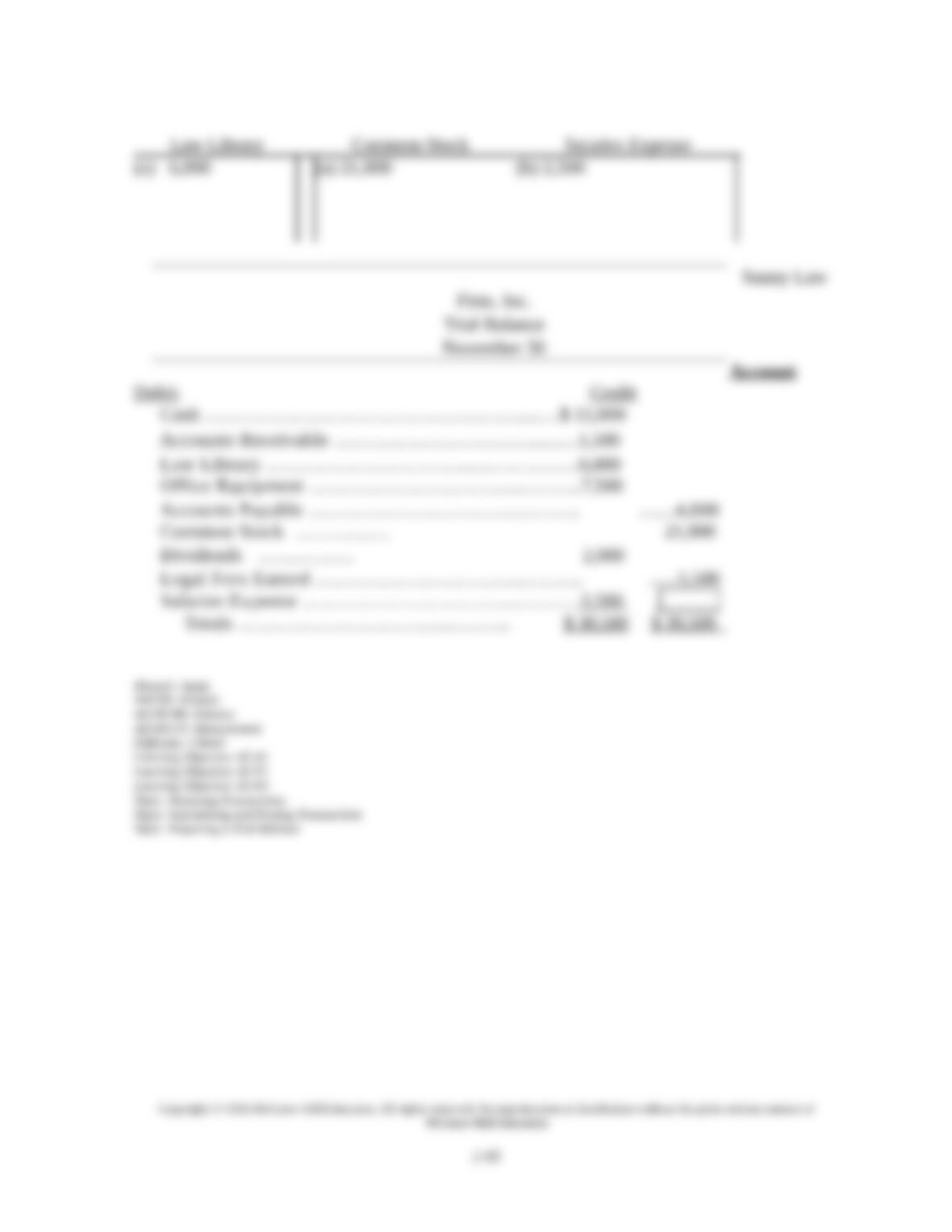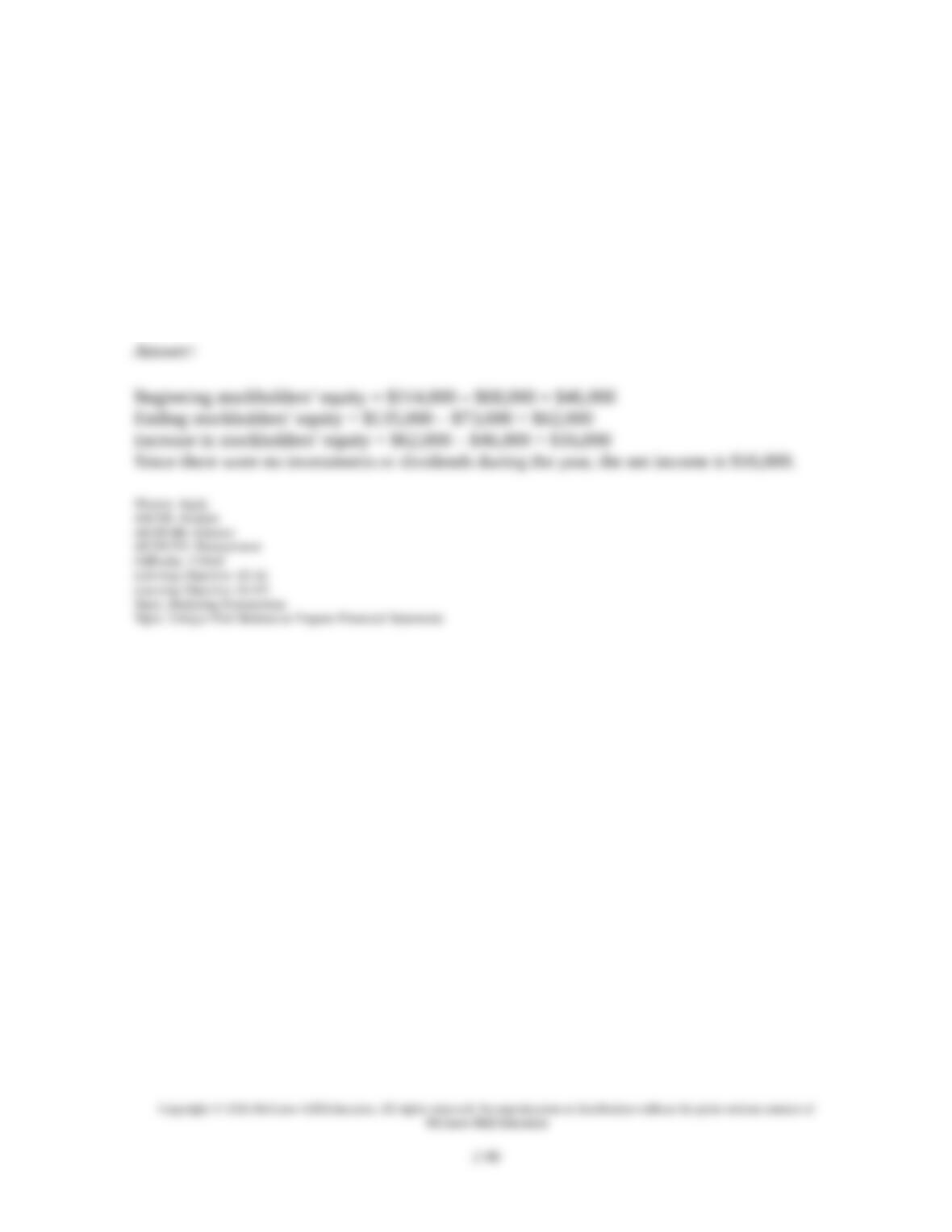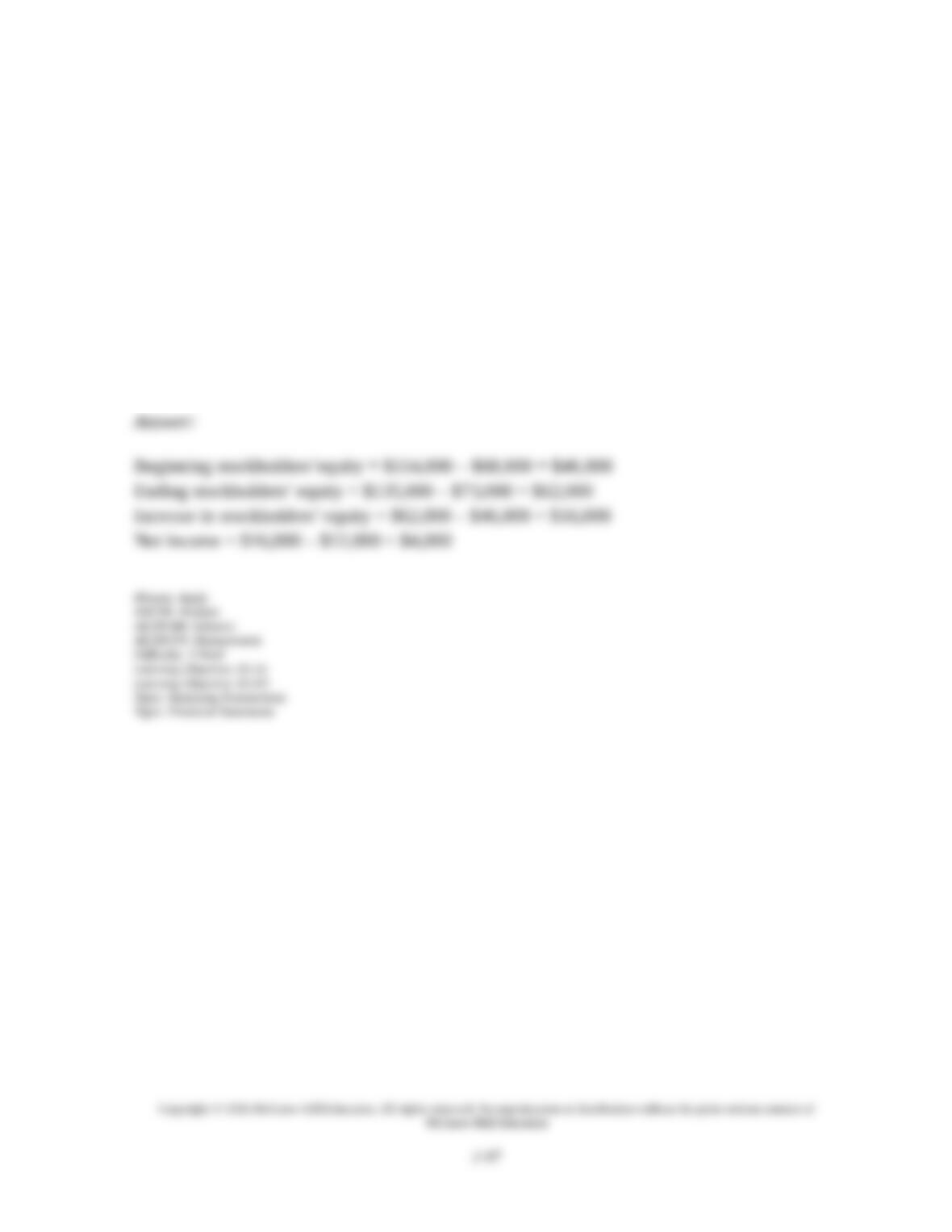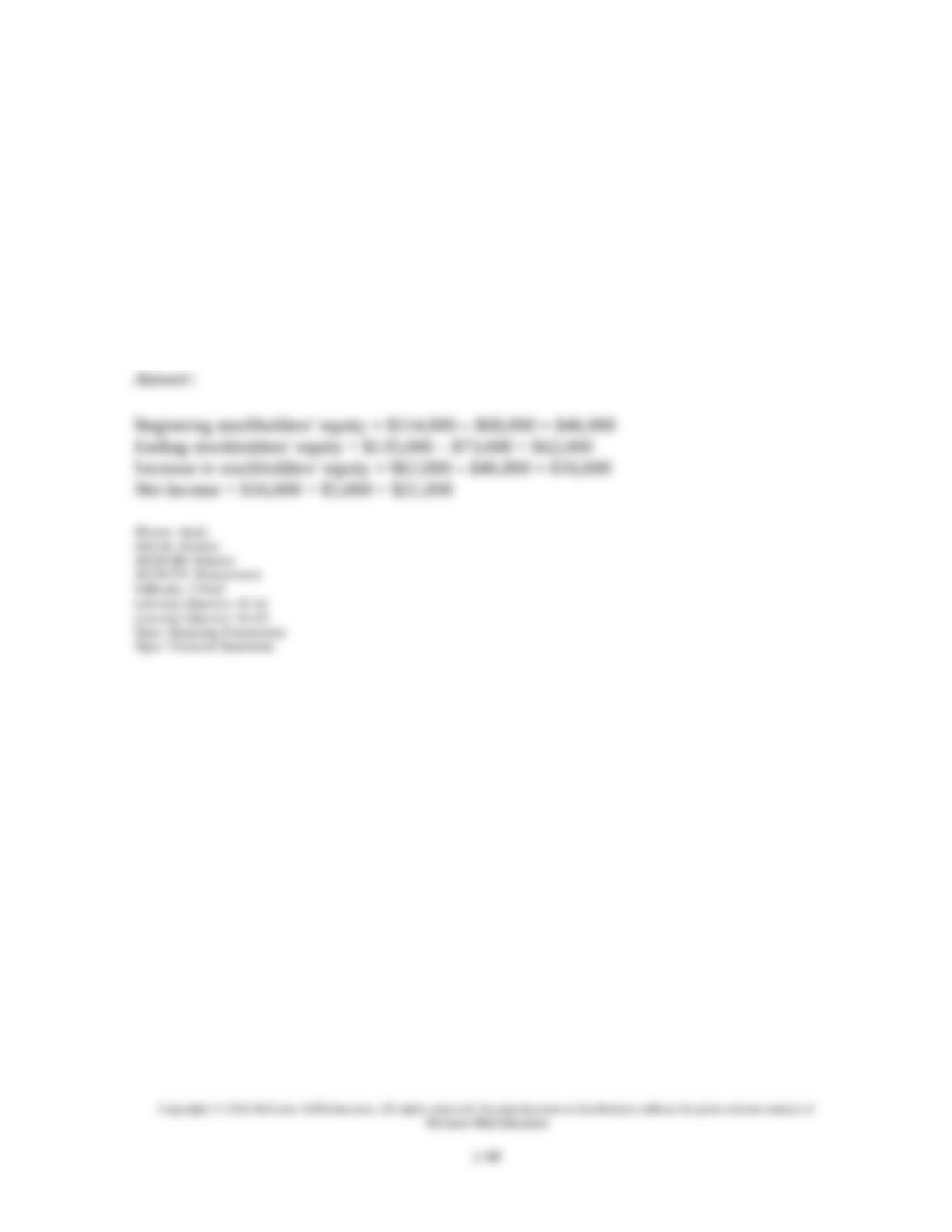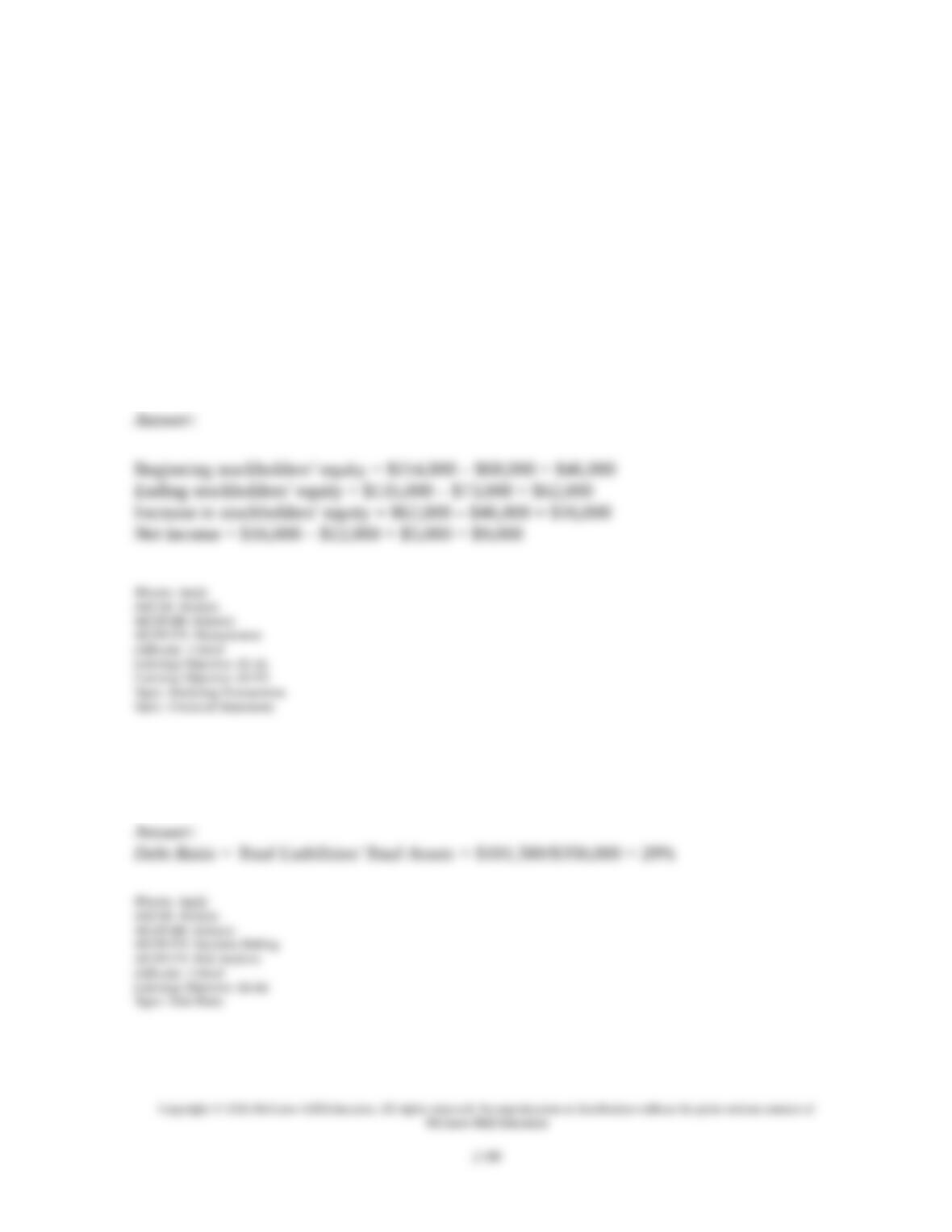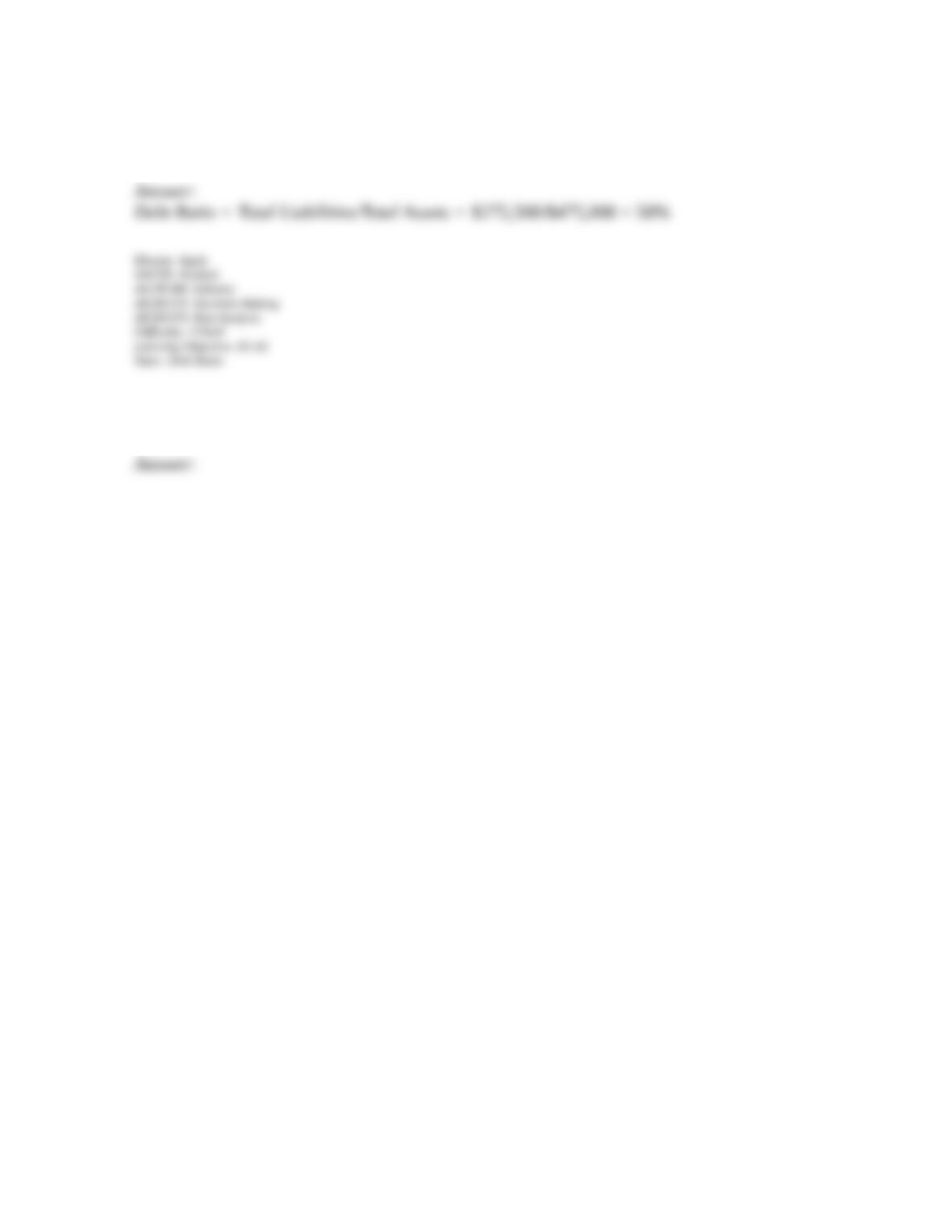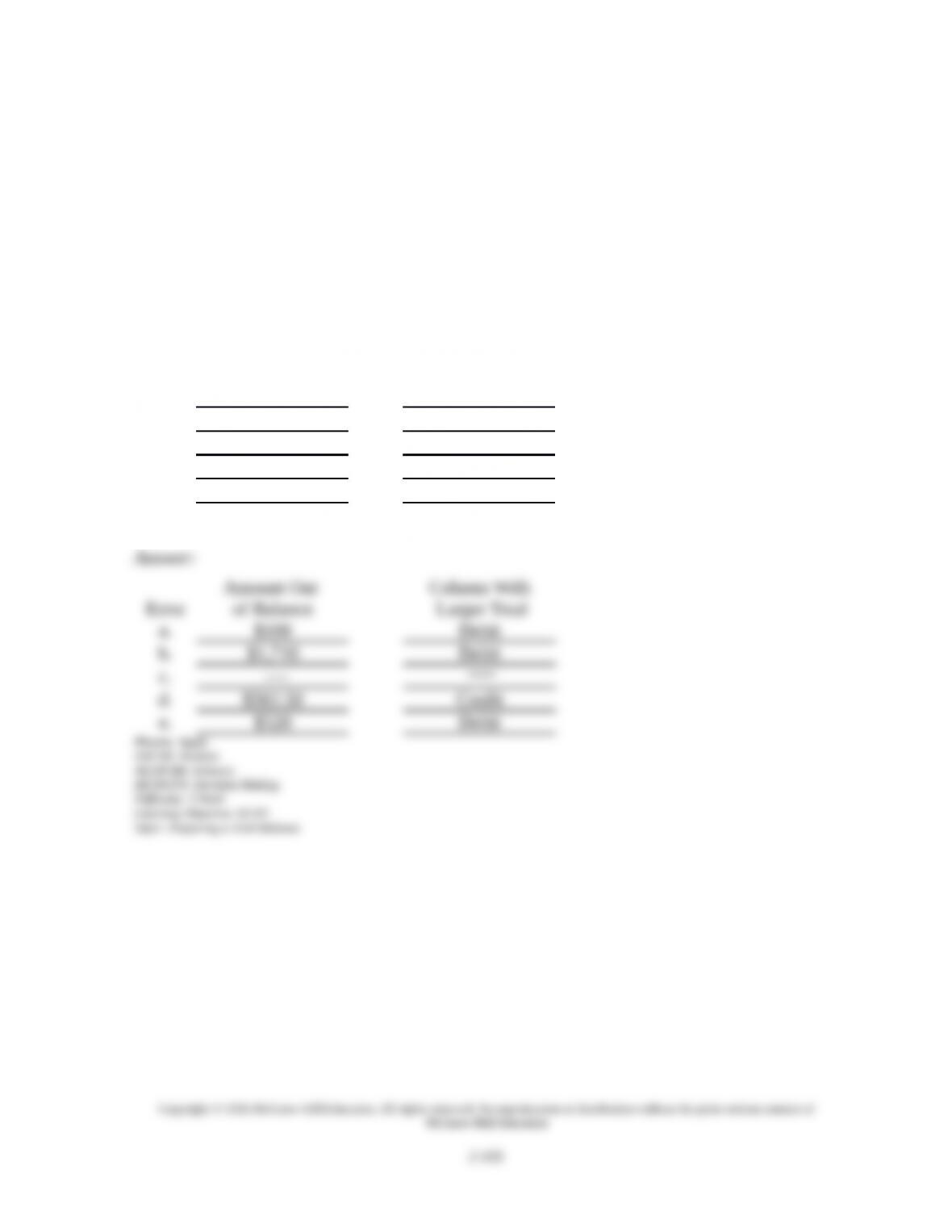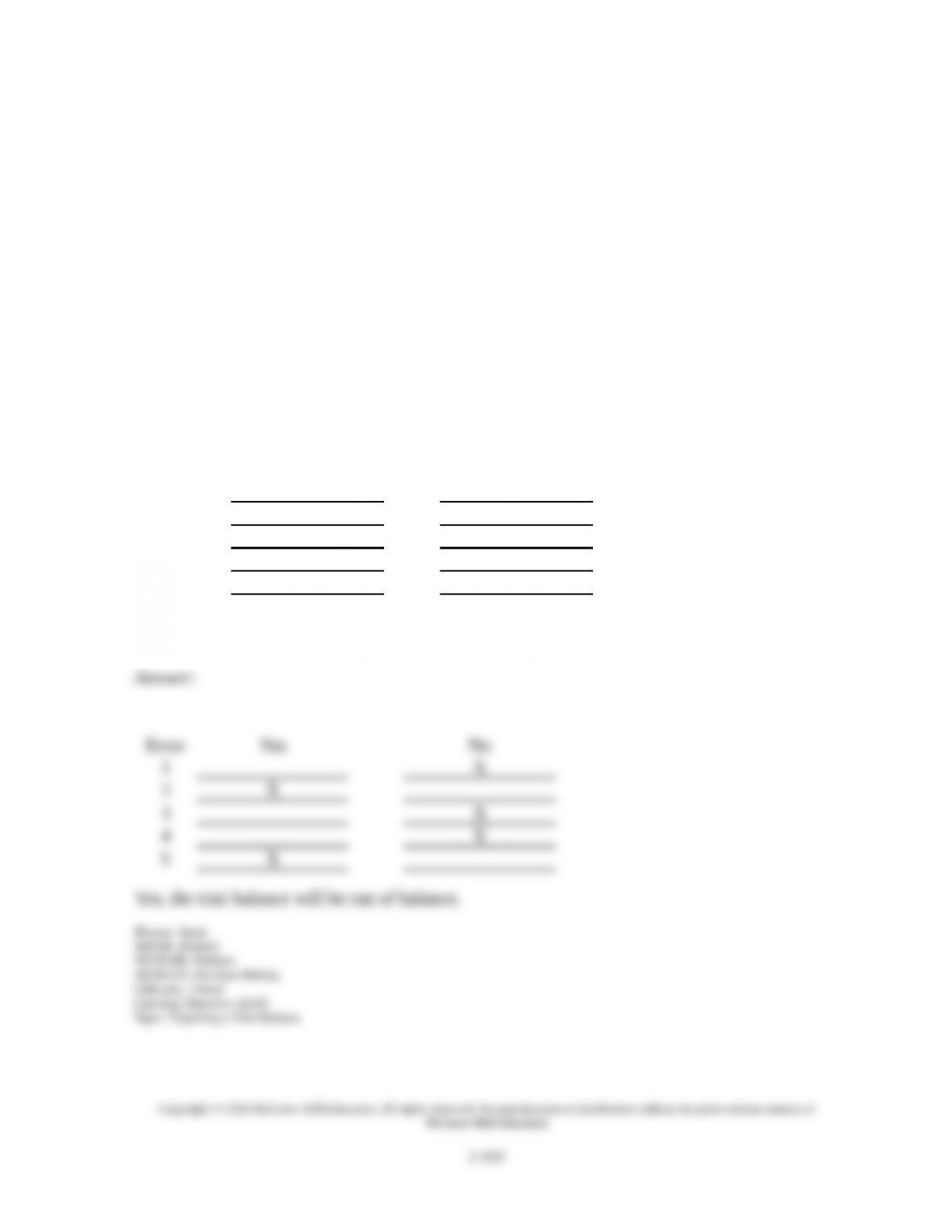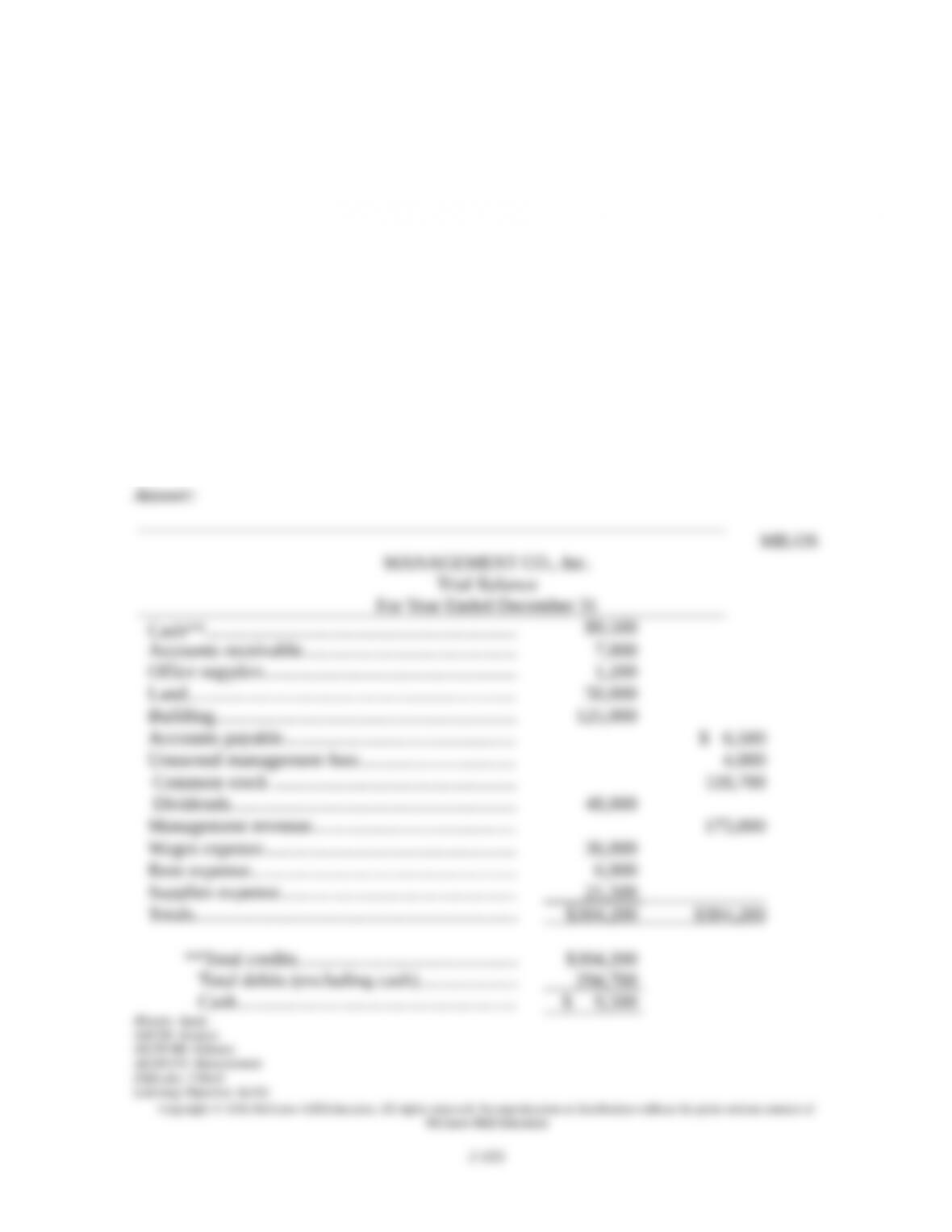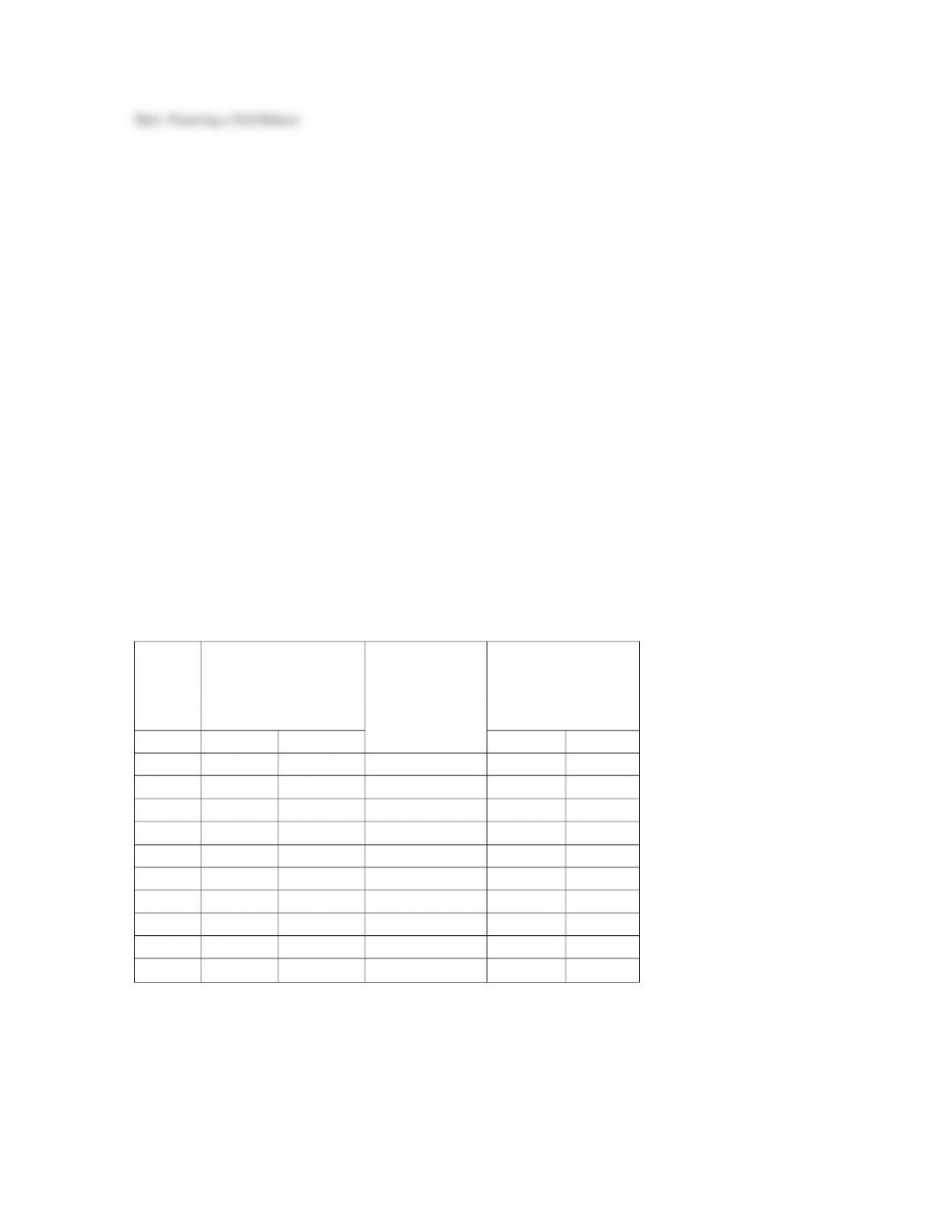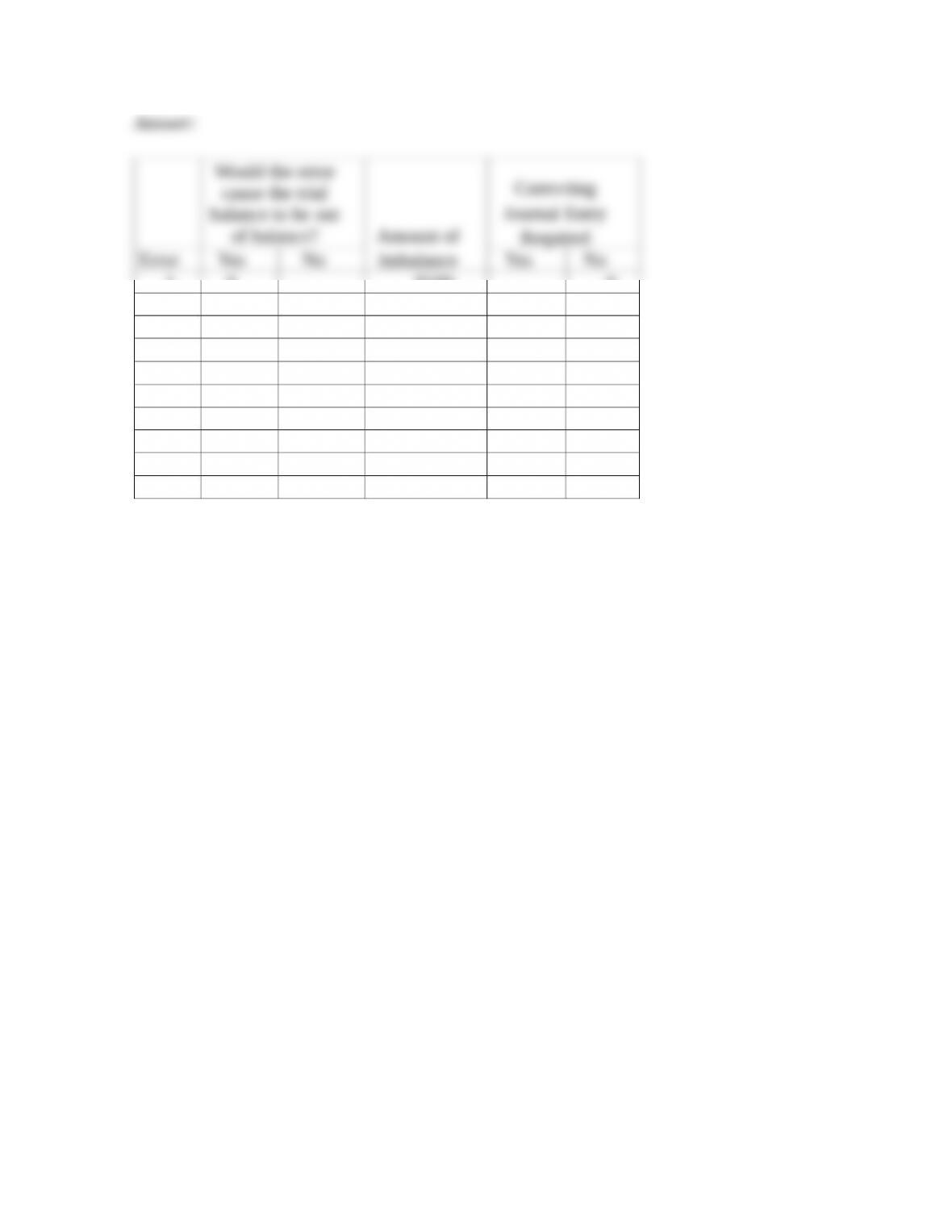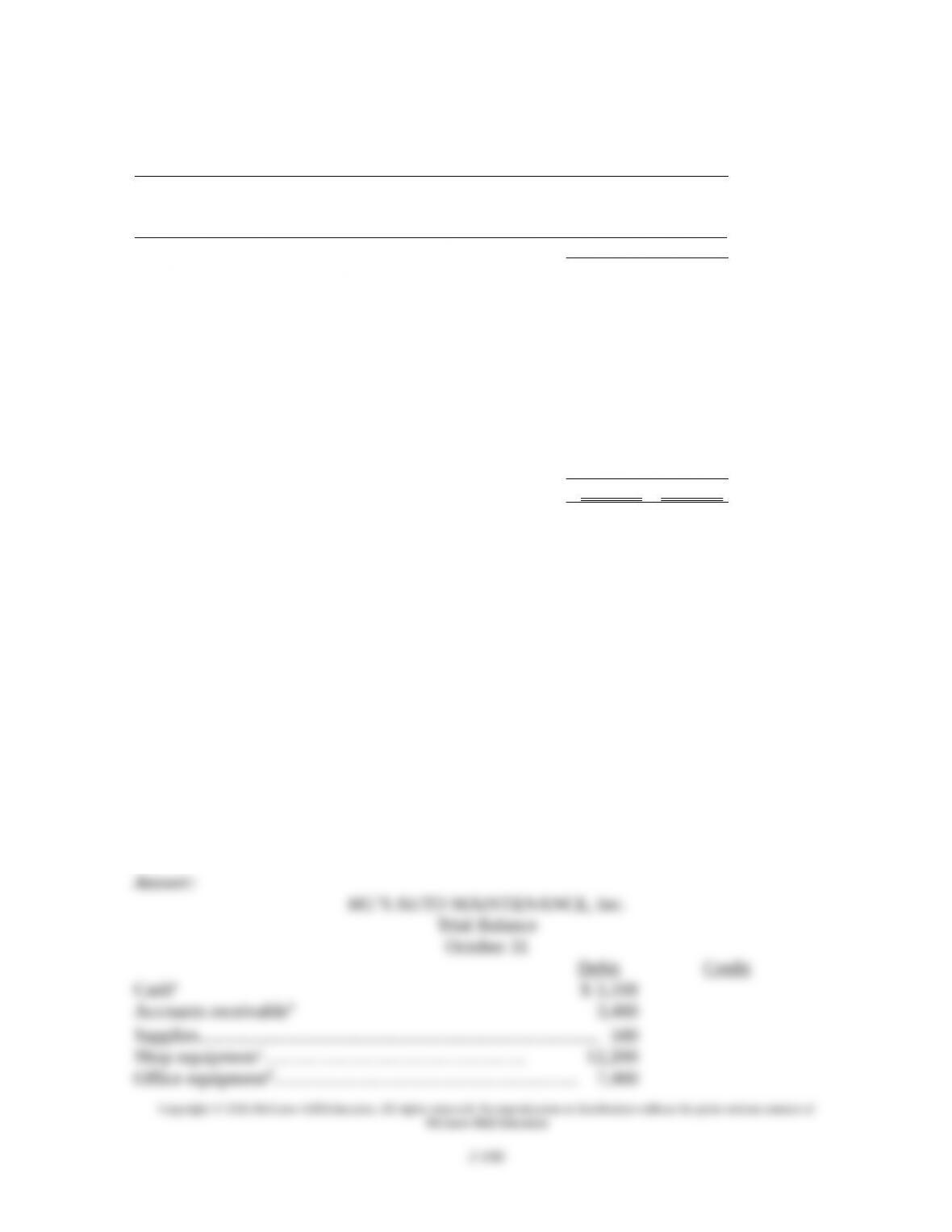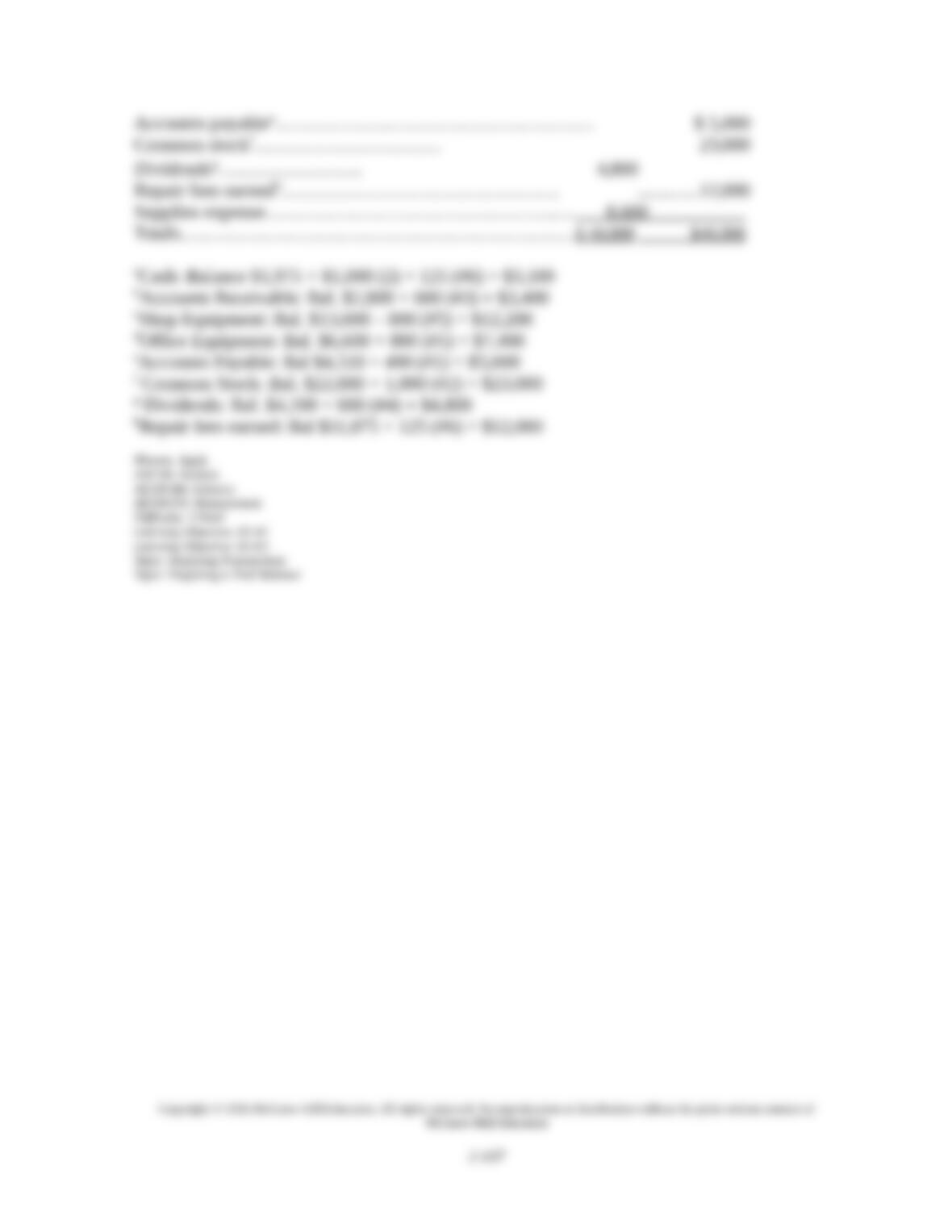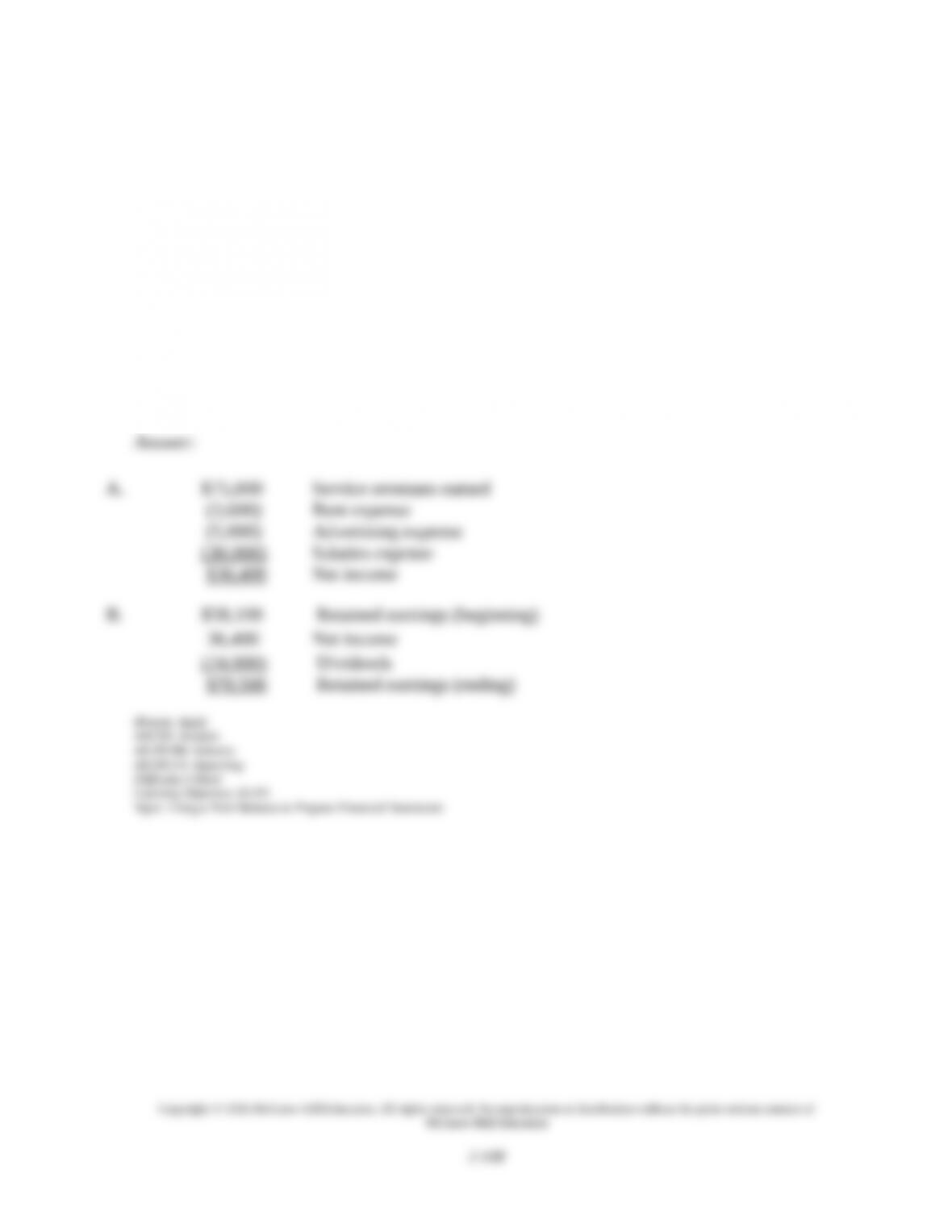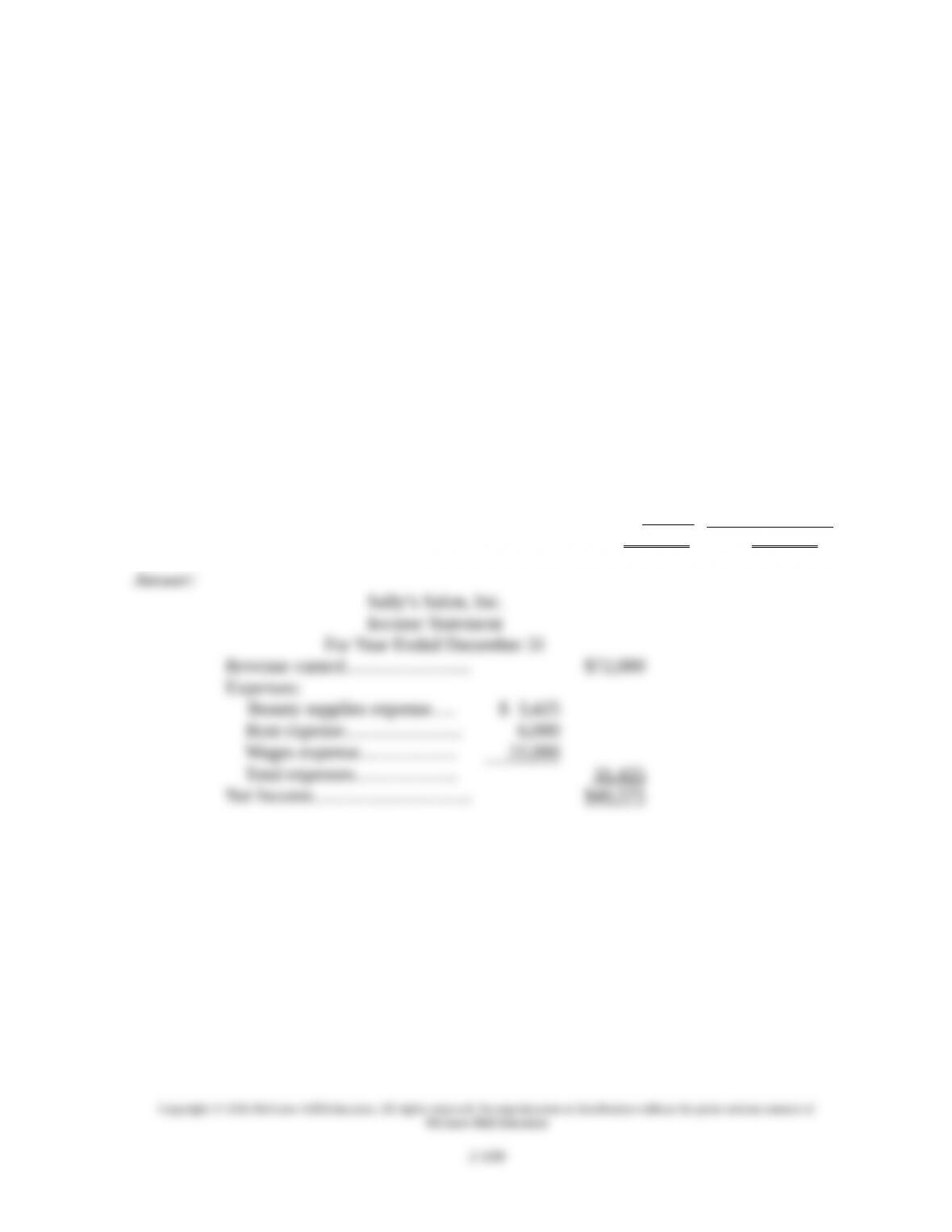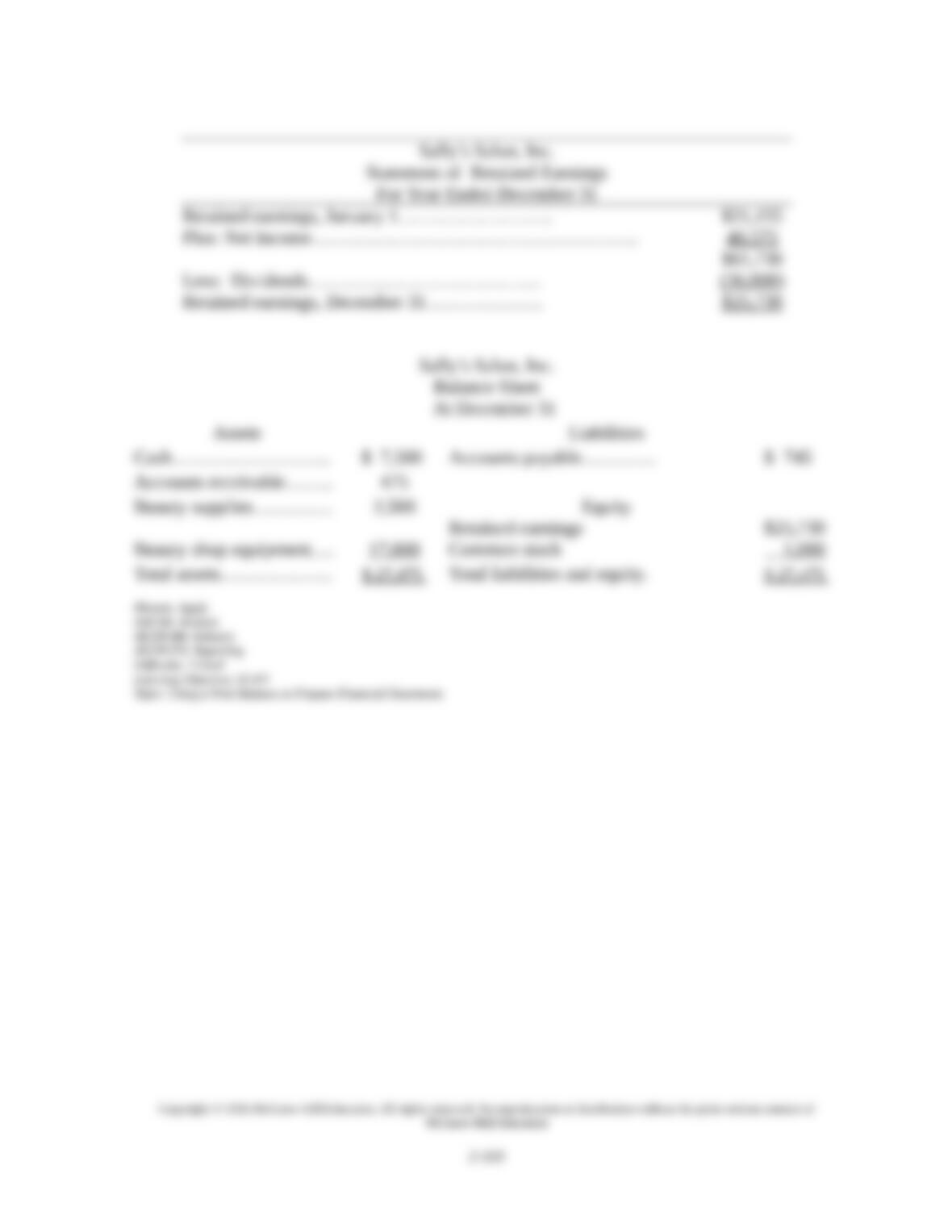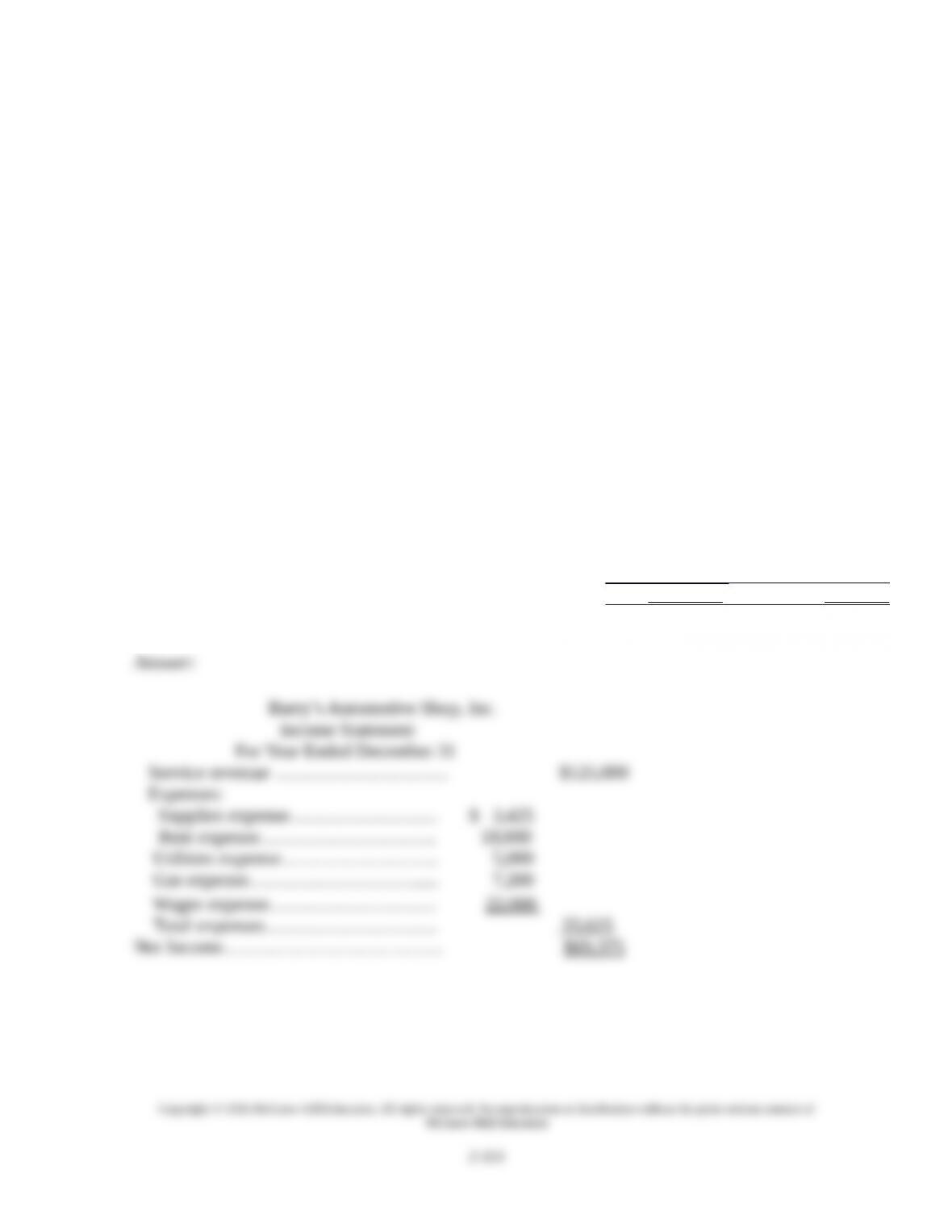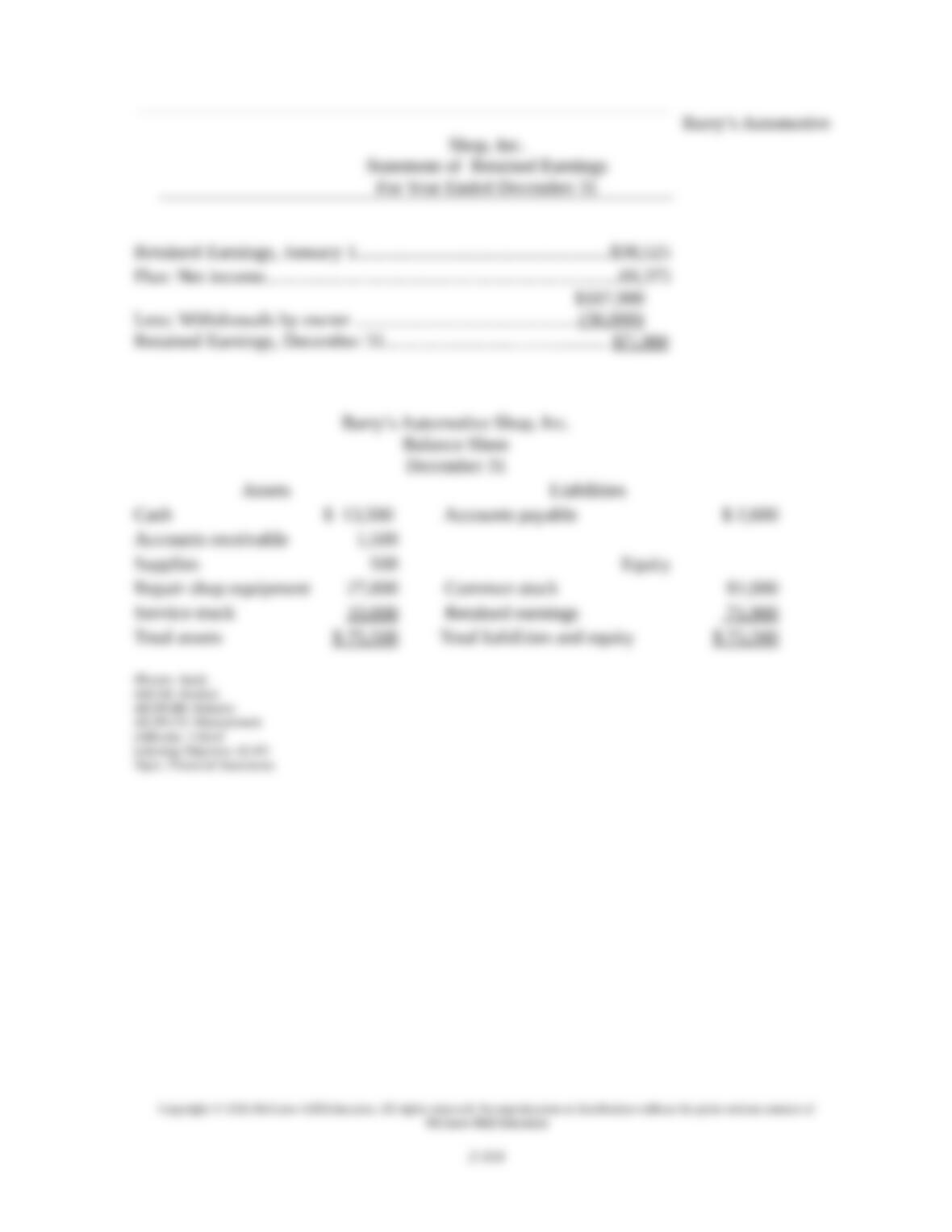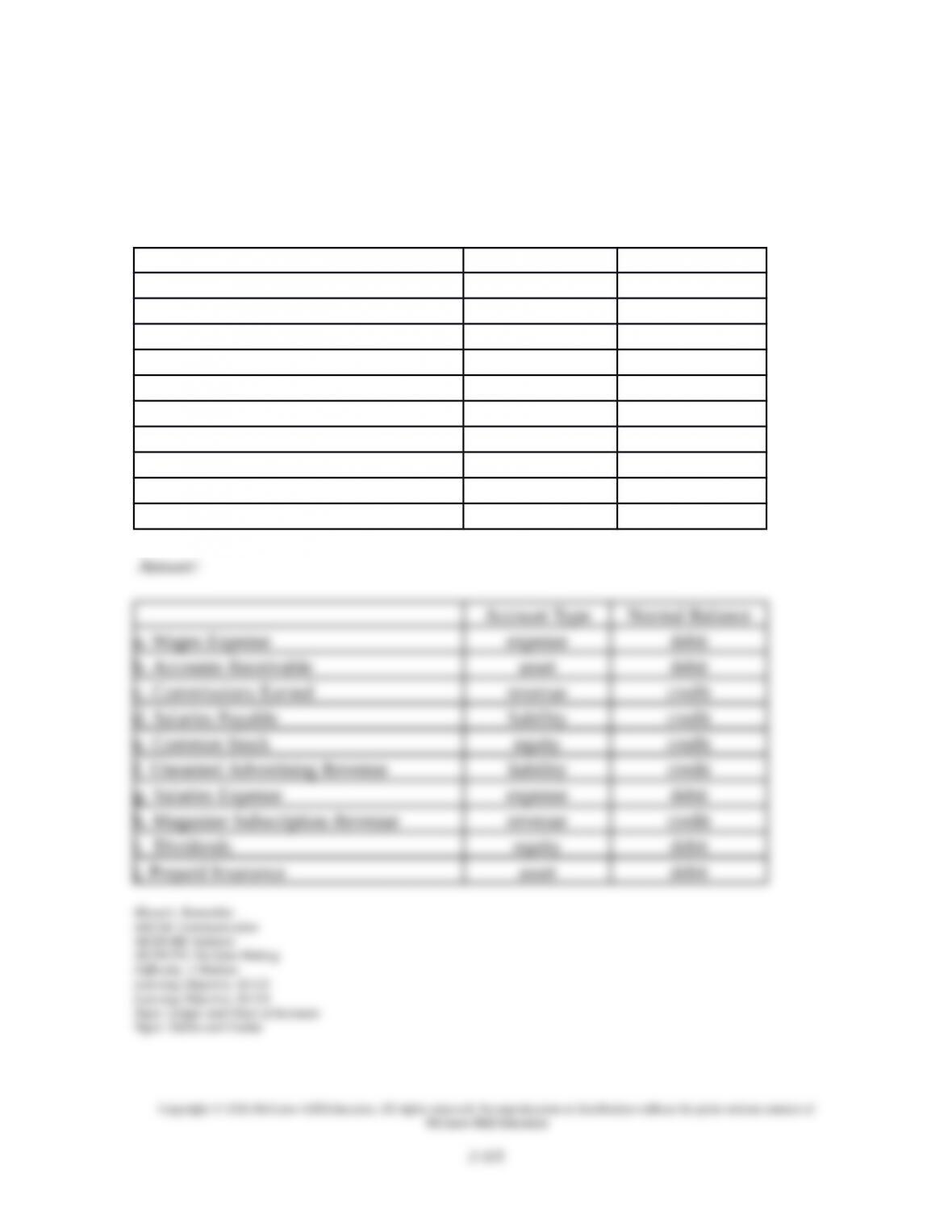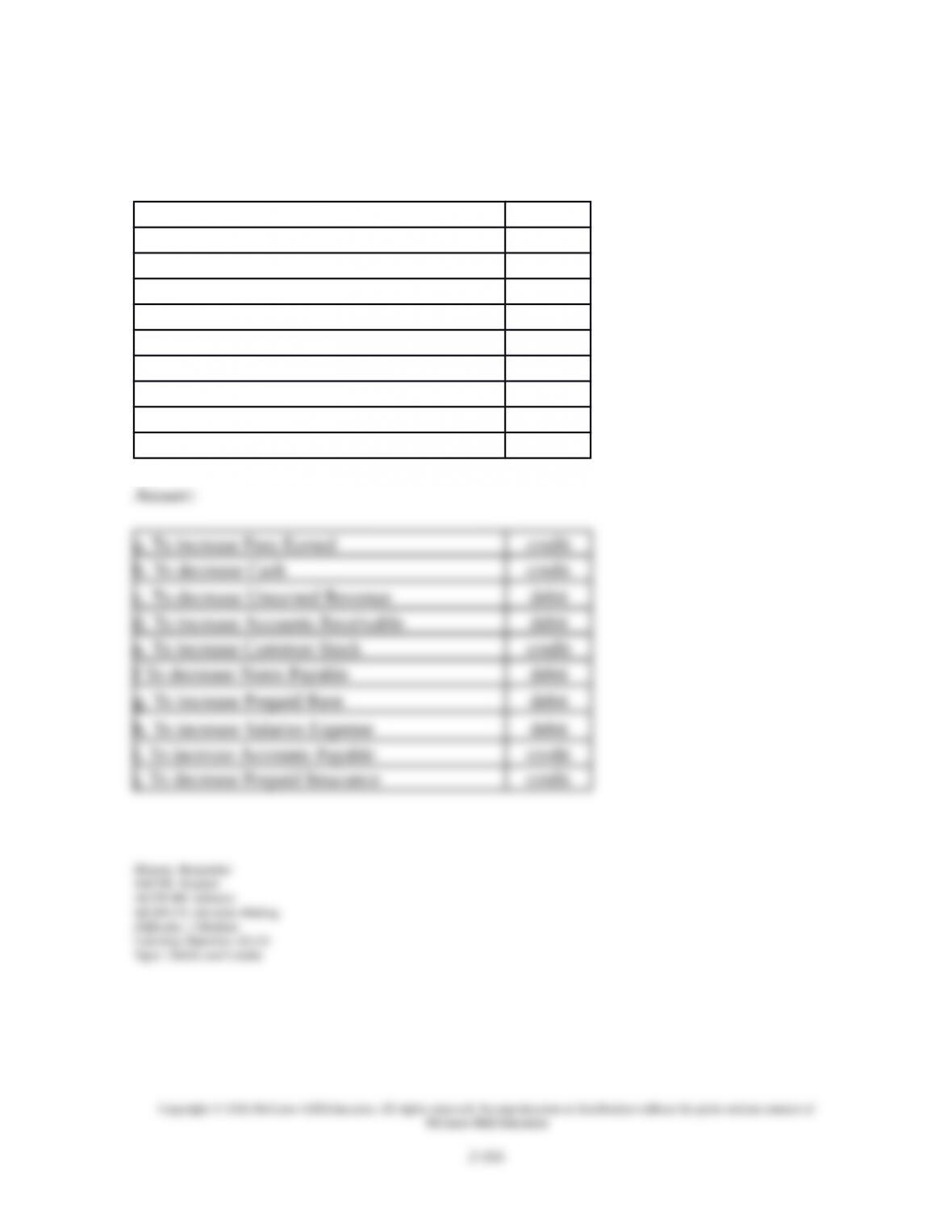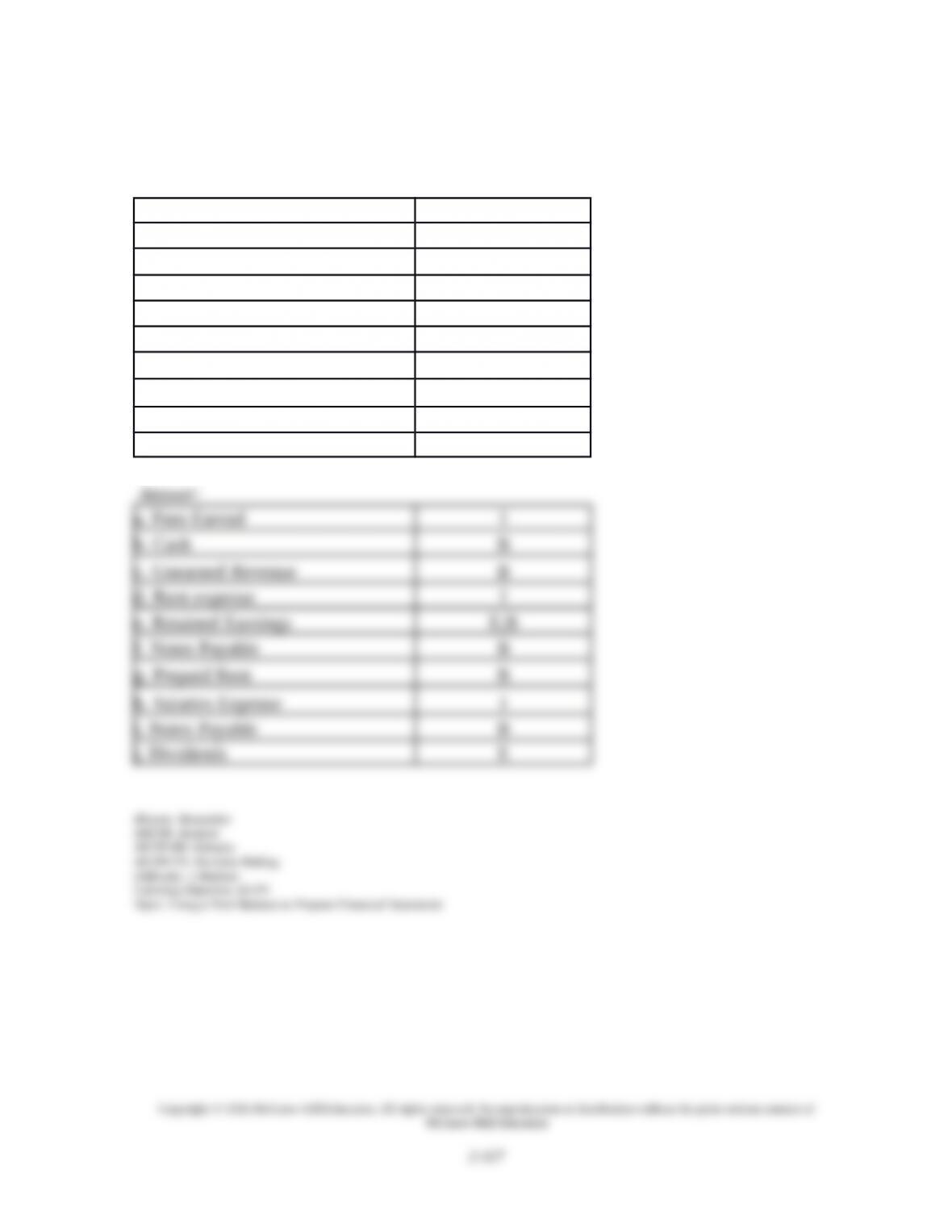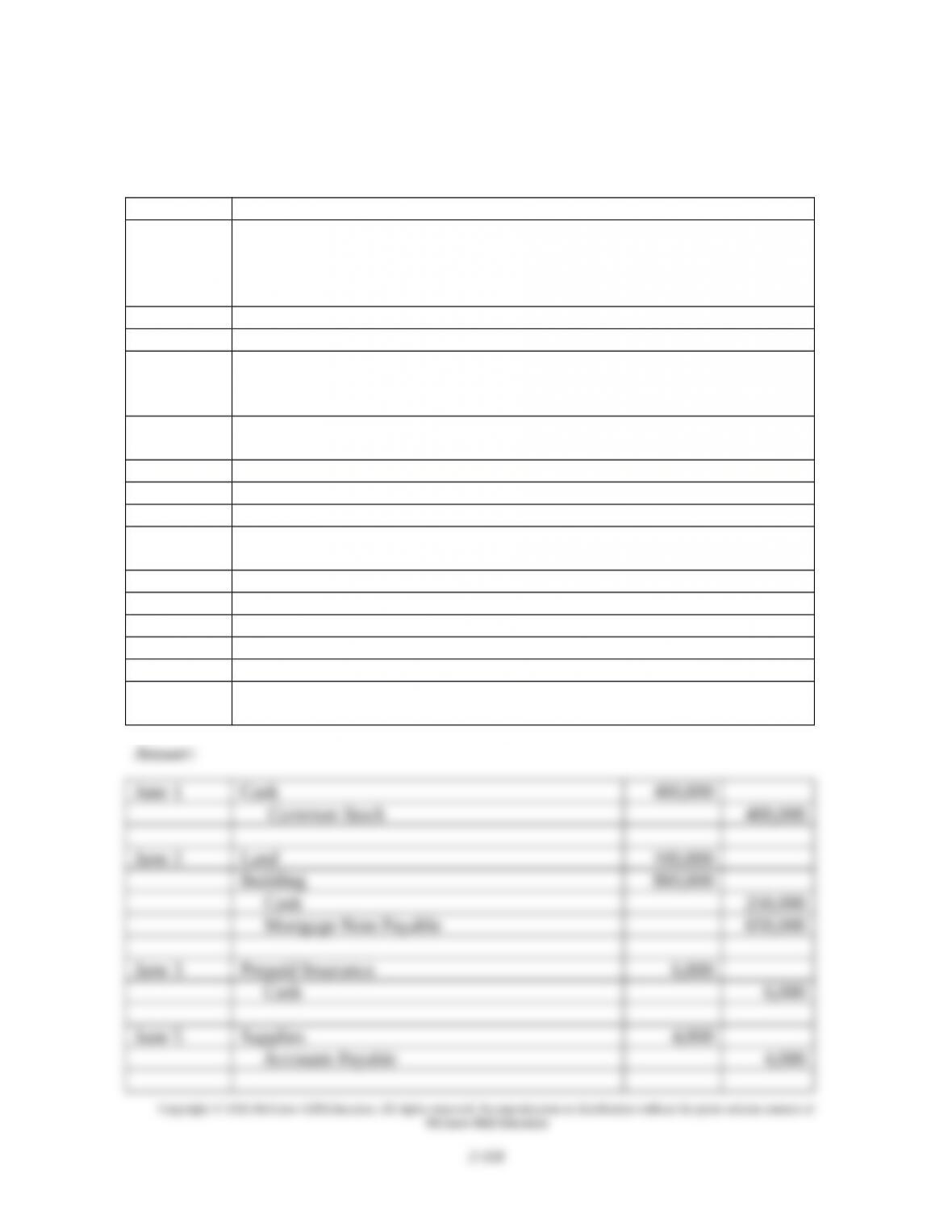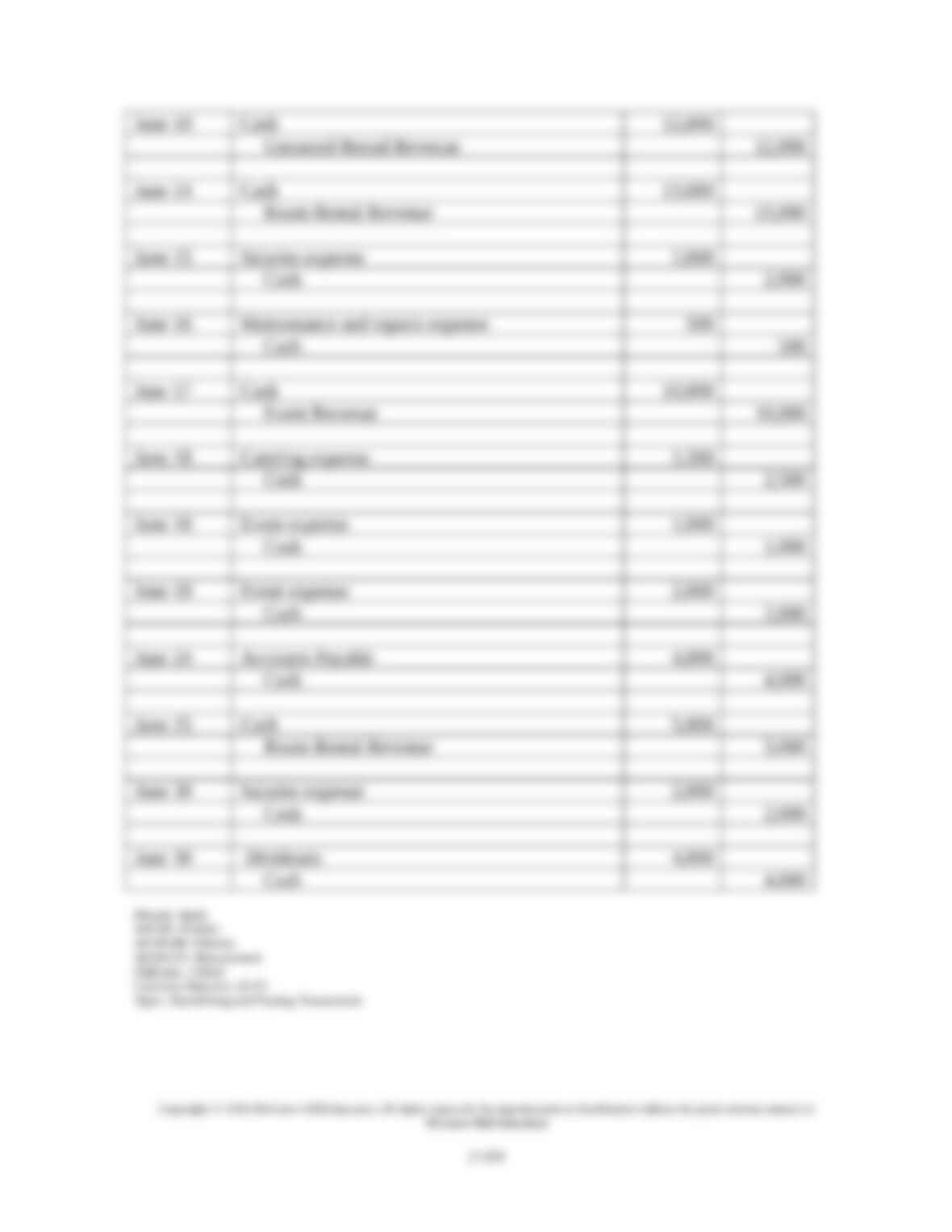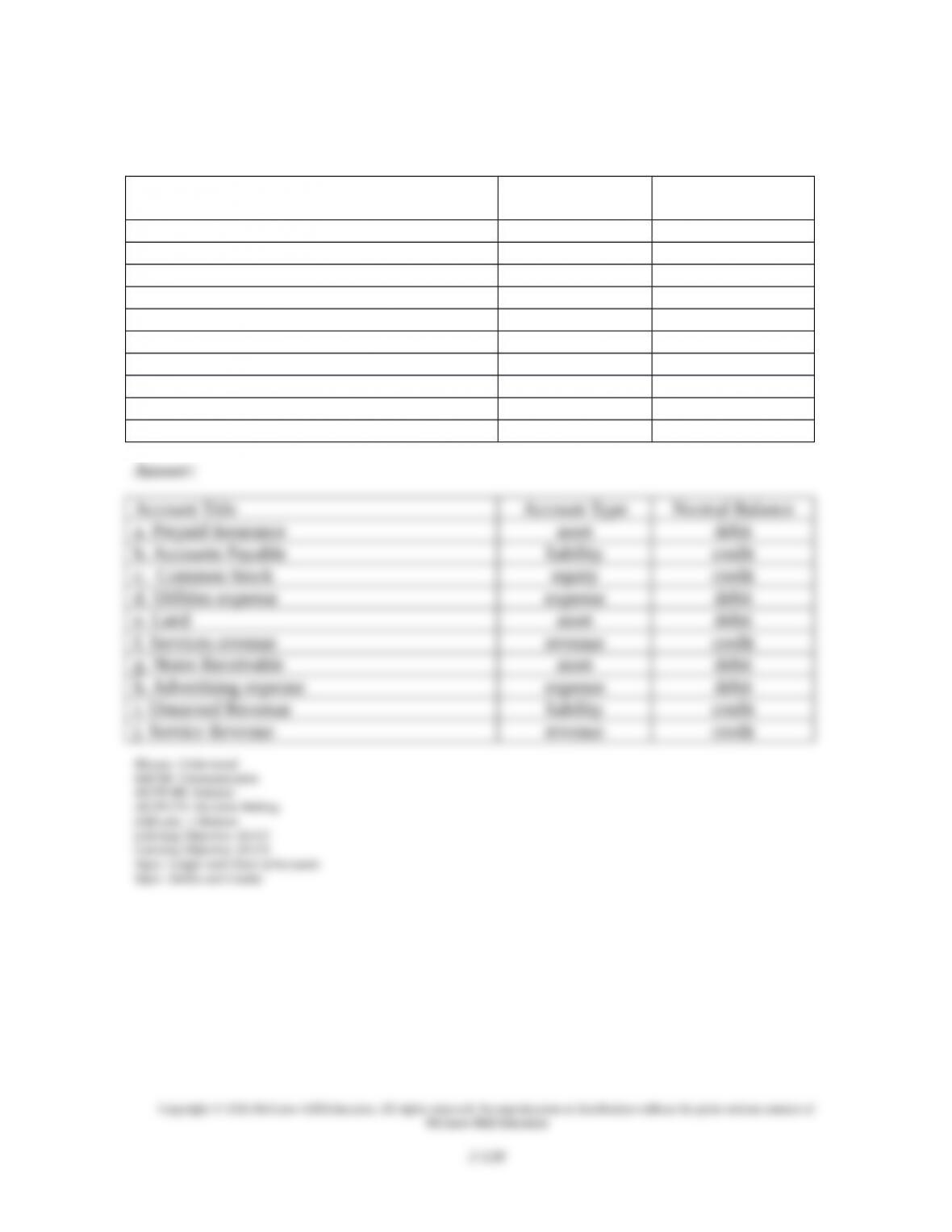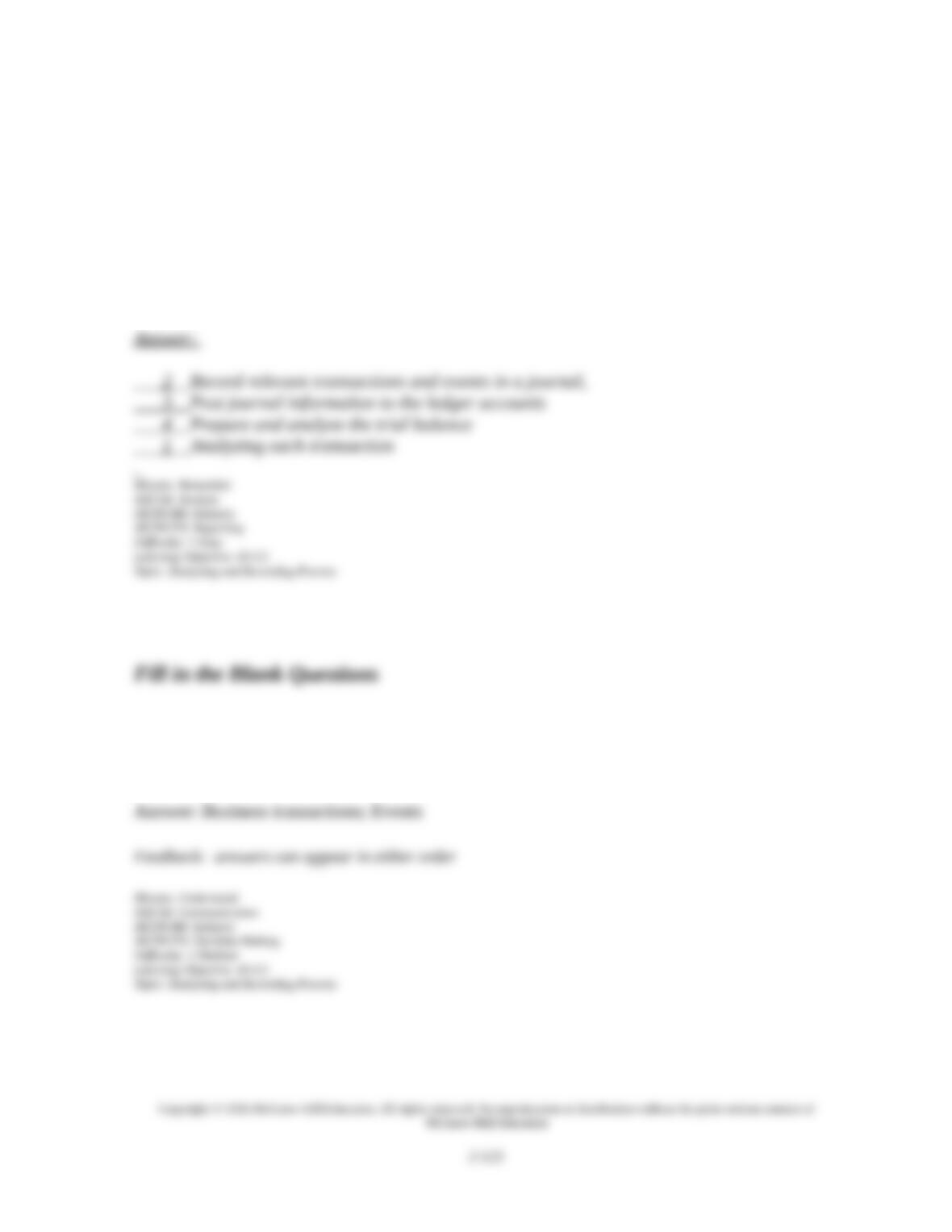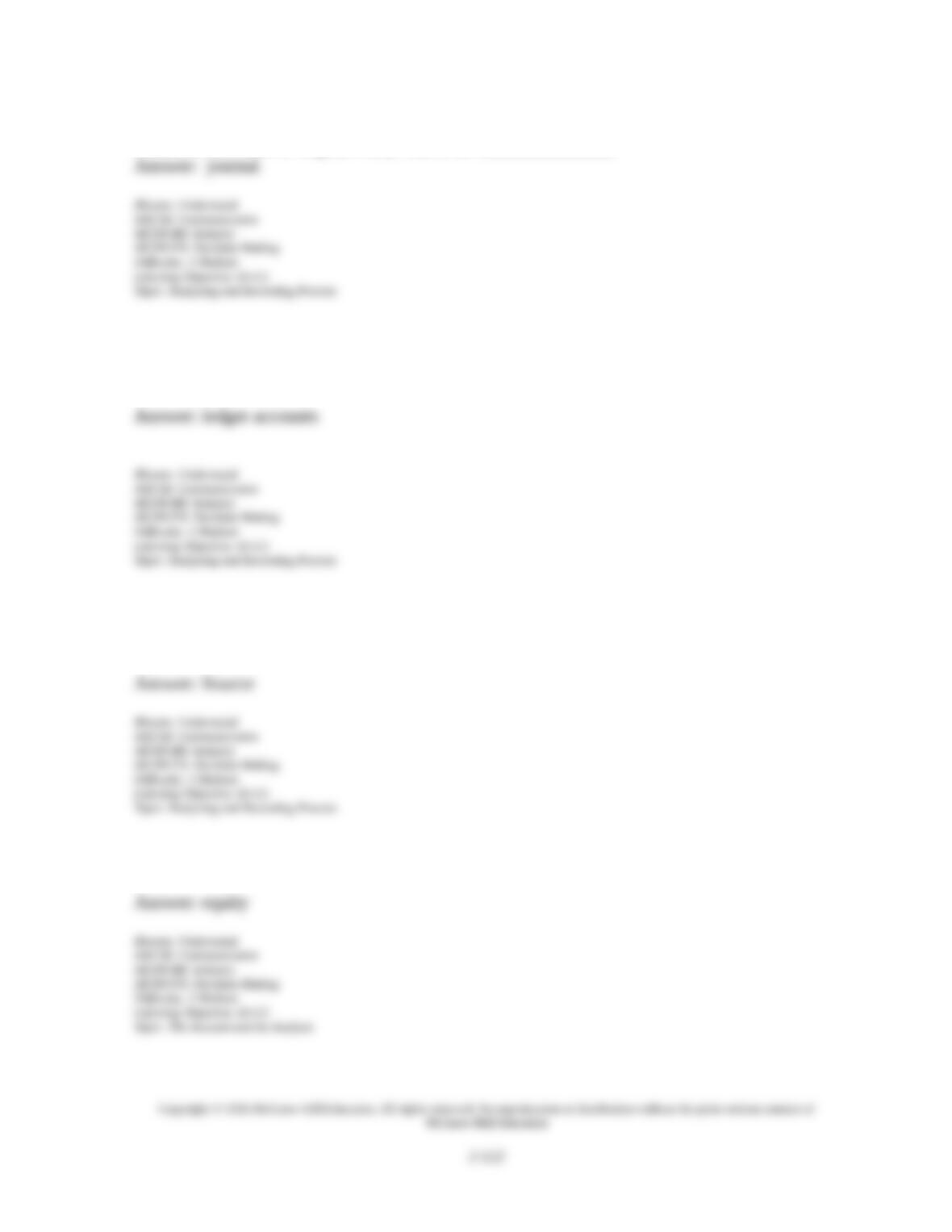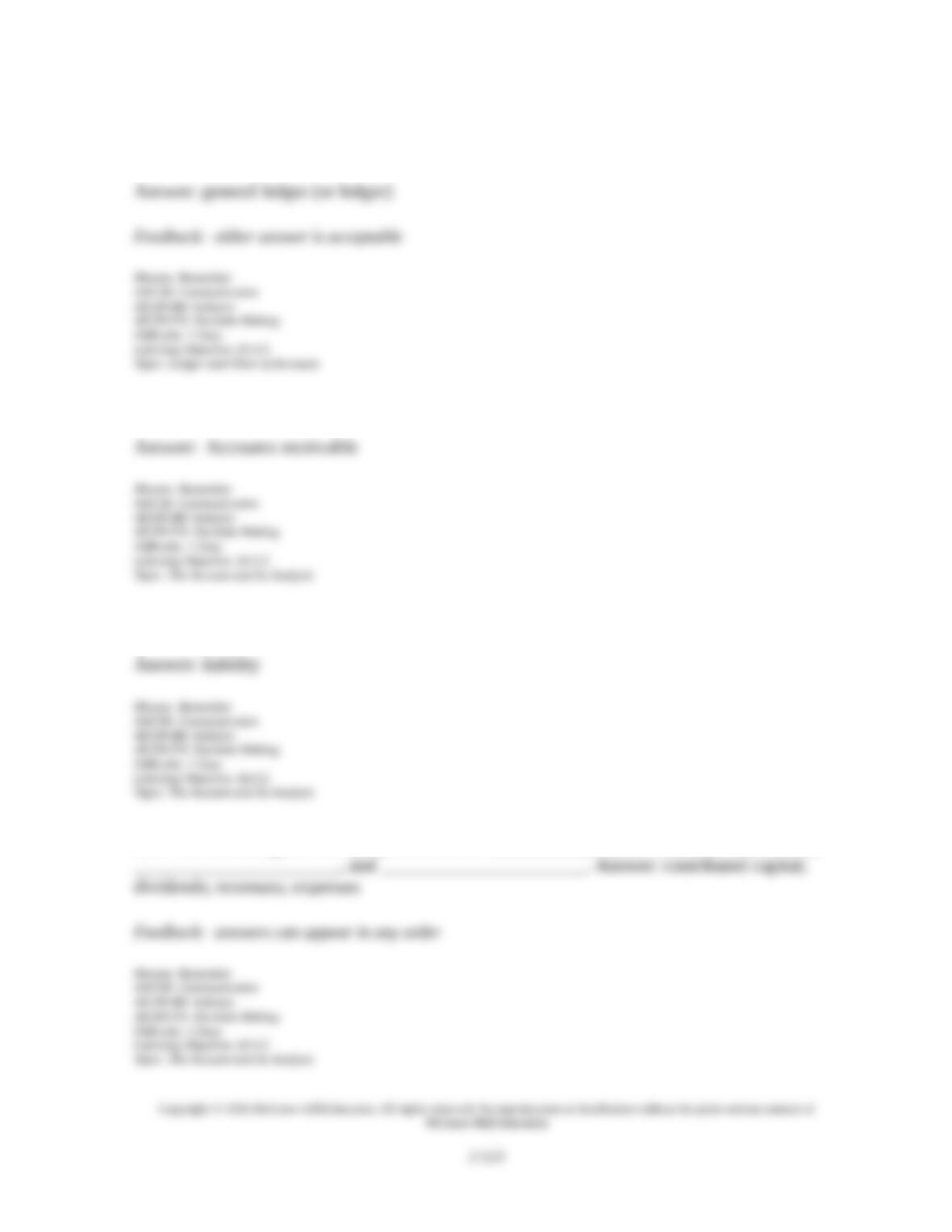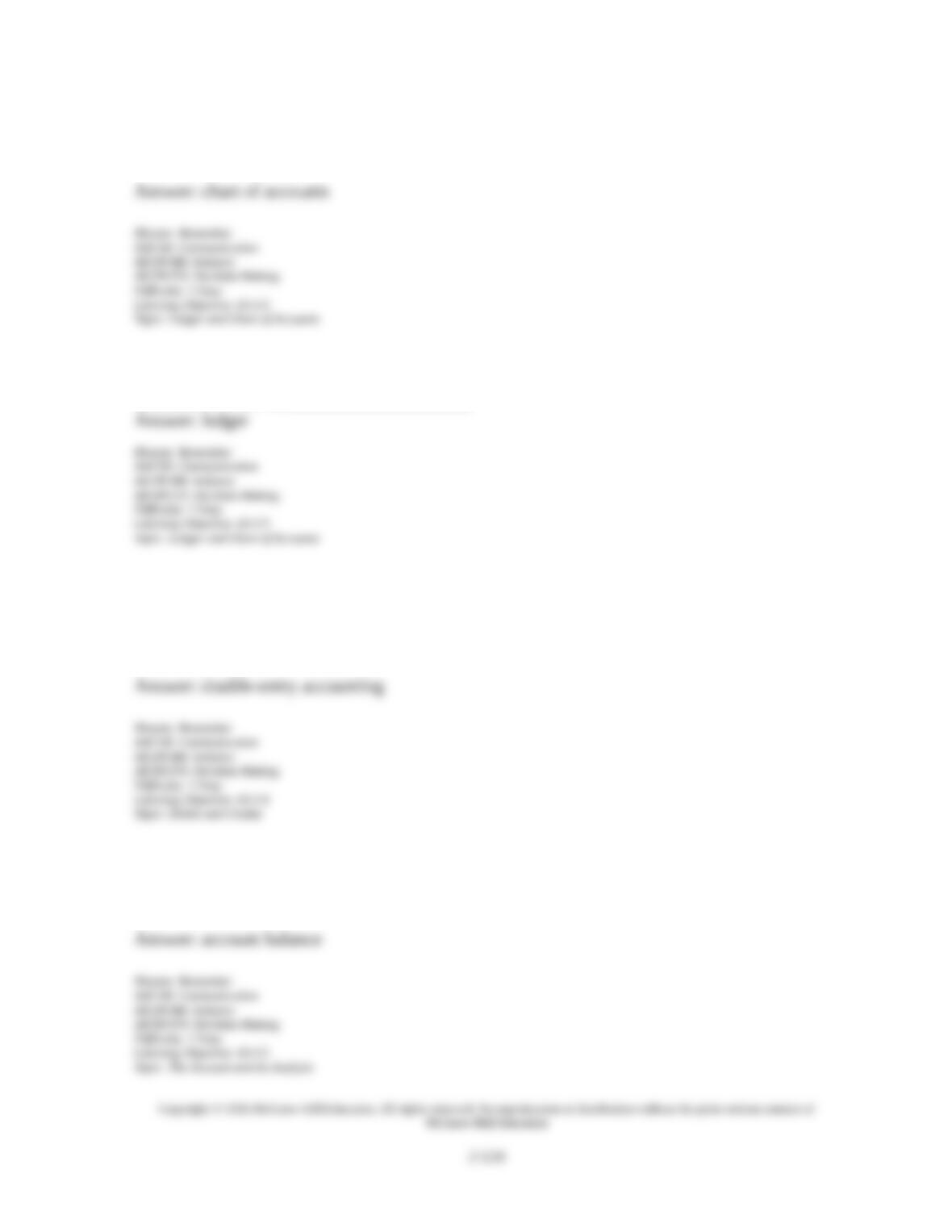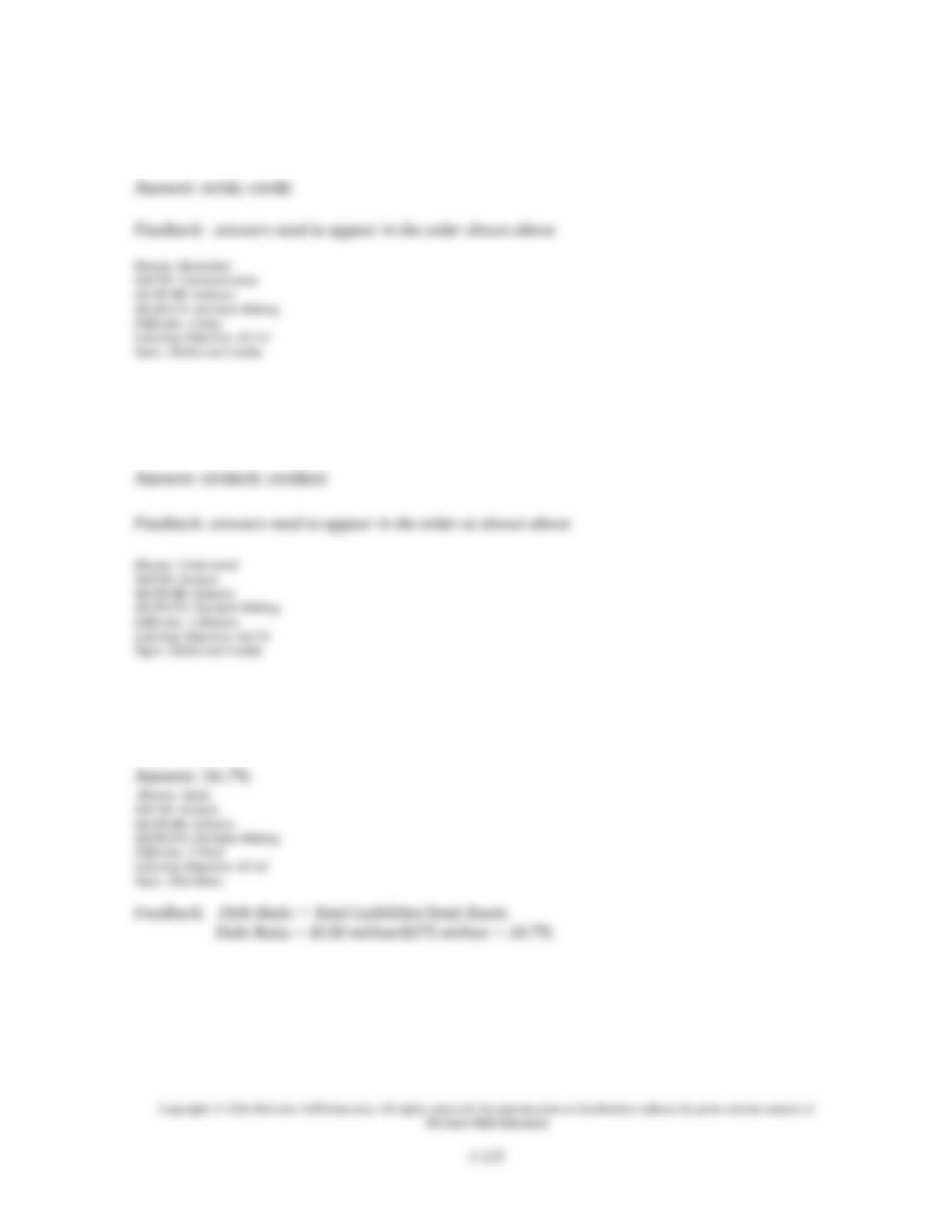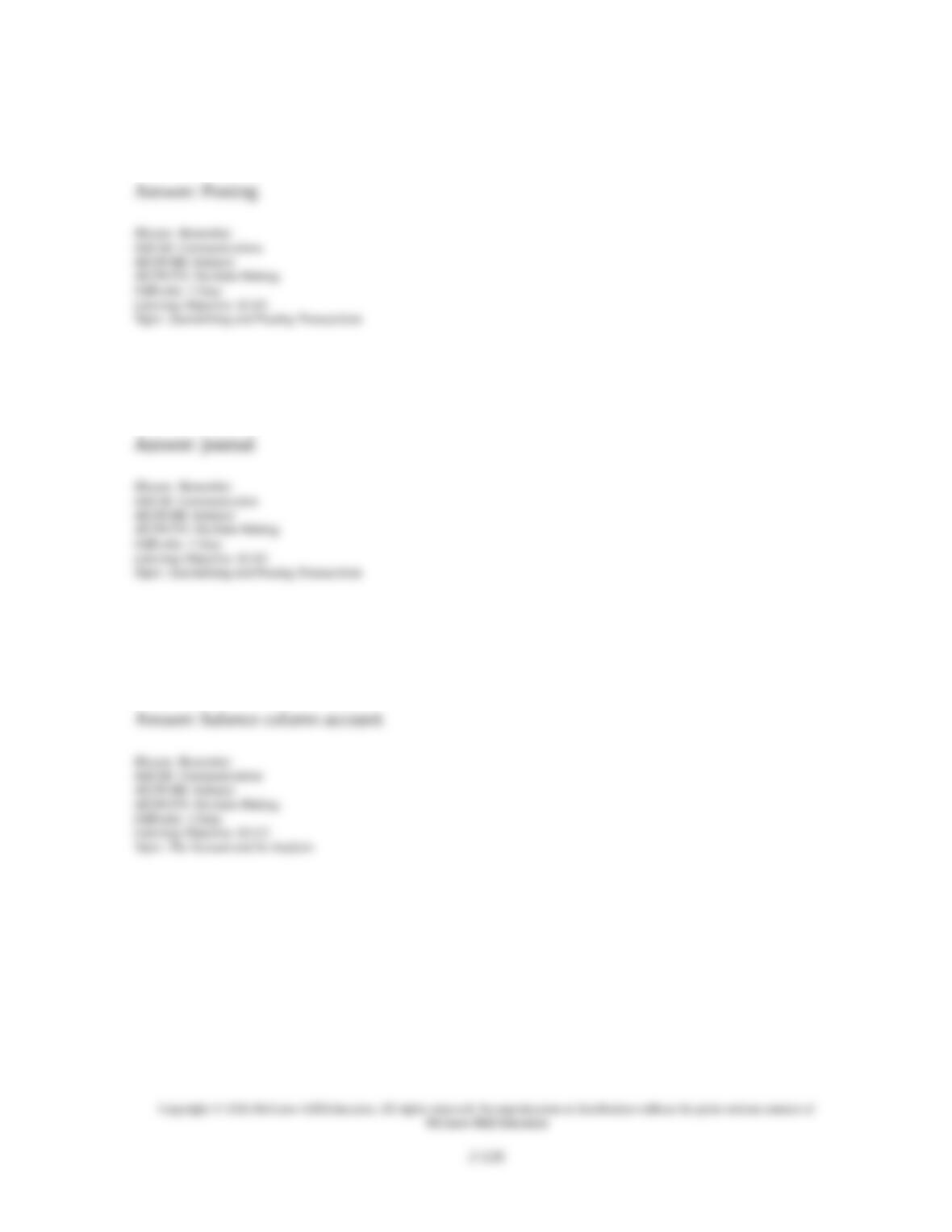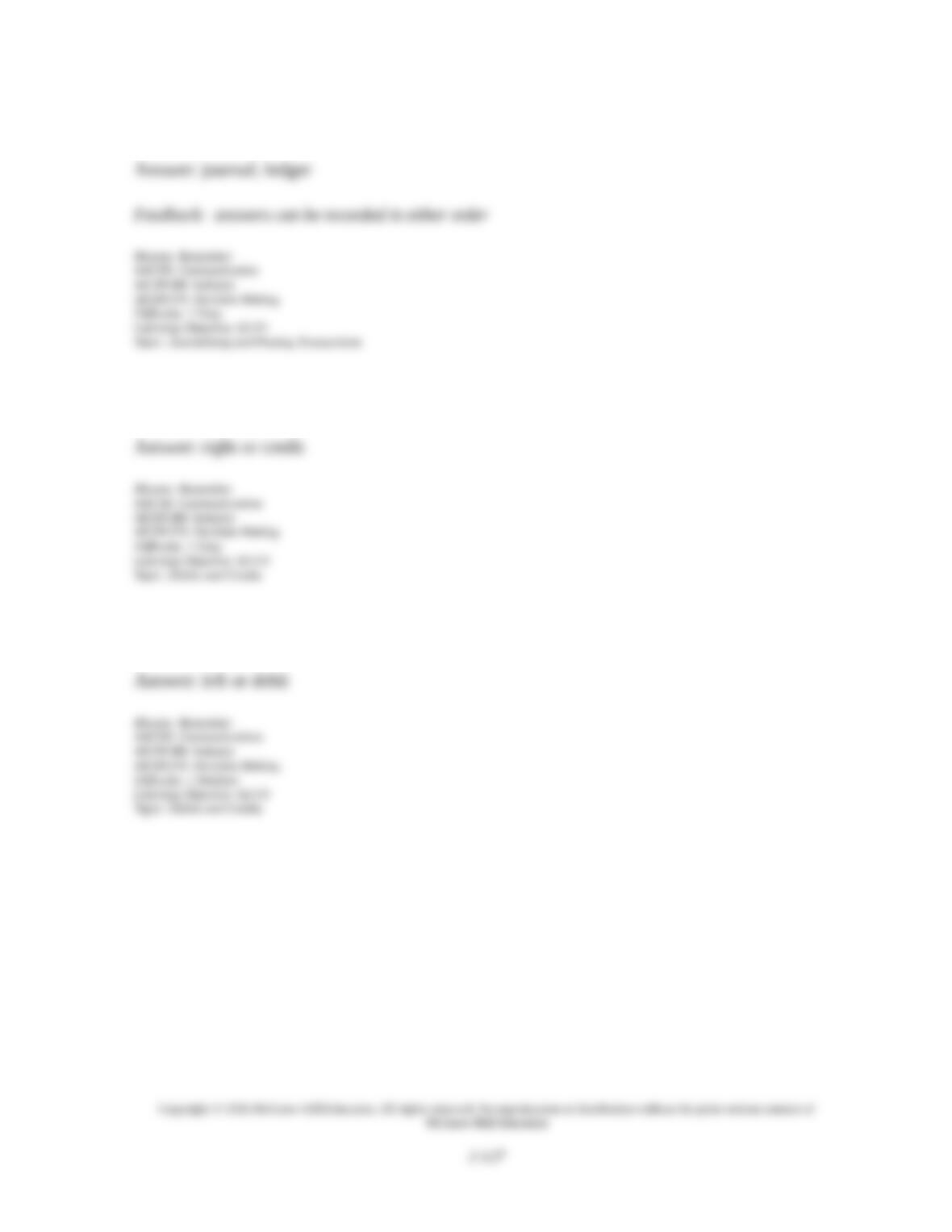Topic: Debits and Credits
Topic: Trial Balance
164. Provided below is a list of definitions and terms. Match them by placing the letter that
identifies the best definition in the blank space next to each term.
____ 1. Debit ____ 6. Chart of accounts
____ 2. Note payable ____ 7. Trial balance
____ 3. Ledger ____ 8. Credit
____ 4. Journal ____ 9. Account balance
____ 5. Debt ratio ____ 10. Balance column account
A. An increase in an asset, dividend, and expense account, and a decrease in a
liability, contributed capital, retained earnings, and revenue account; recorded on
the left side of a T-account.
B. A decrease in an asset and expense account, and an increase in a liability,
contributed capital, retained earnings, and revenue account; recorded on the right
side of a T-account.
C. A written promise to pay a definite sum of money on a specified future date.
D. The difference between total debits and total credits for an account including the
beginning balance.
E. A list of accounts and their balances at a point in time; the total debit balances
should equal the total credit balances.
F. A list of all accounts used by a company and the identification number assigned to
each account.
G. The ratio of total liabilities to total assets; used to reflect the risk associated with
the company’s debts.
H. An account with debit and credit columns for recording entries and another
column for showing the balance of the account after each entry.
I. A chronological record of each transaction in one place that shows debits and
credits for each transaction.
J. A record containing all accounts of a company and their balances.
1. A; 2. C; 3. J; 4. I; 5. G; 6. F; 7. E; 8. B; 9. D; 10. H
Blooms: Remember
AACSB: Communication
AICPA BB: Industry
AICPA FN: Decision Making
Difficulty: 1 Easy
Learning Objective: 02-A2
Learning Objective: 02-C1
Learning Objective: 02-C2
Learning Objective: 02-C3
Learning Objective: 02-C4
Topic: Debt Ratio
Topic: Analyzing and Recording Process
Topic: The Account and Its Analysis
Topic: Ledger and Chart of Accounts
Topic: Debits and Credits
Copyright © 2016 McGraw-Hill Education. All rights reserved. No reproduction or distribution without the prior written consent of
McGraw-Hill Education
2-73
























































































